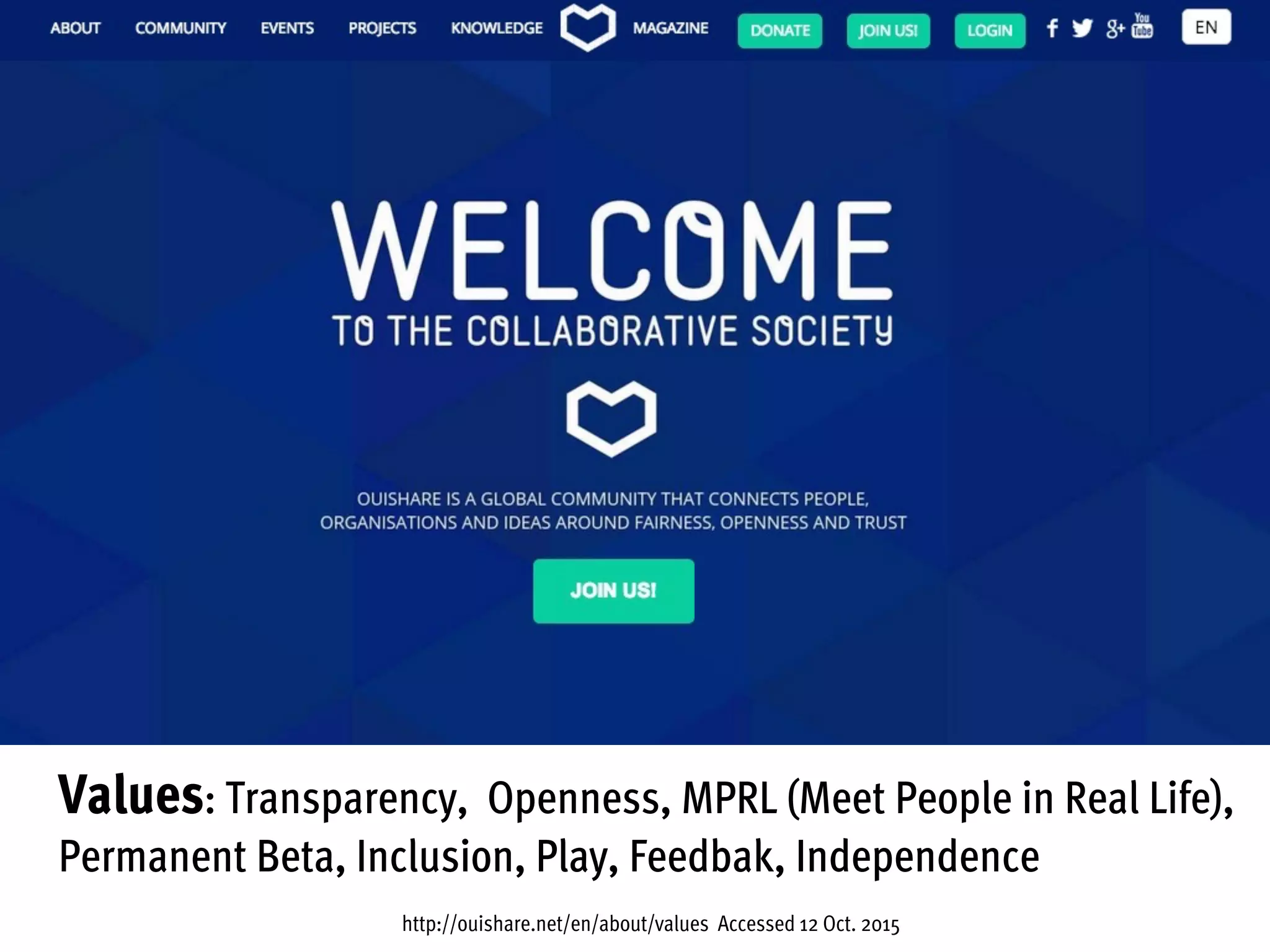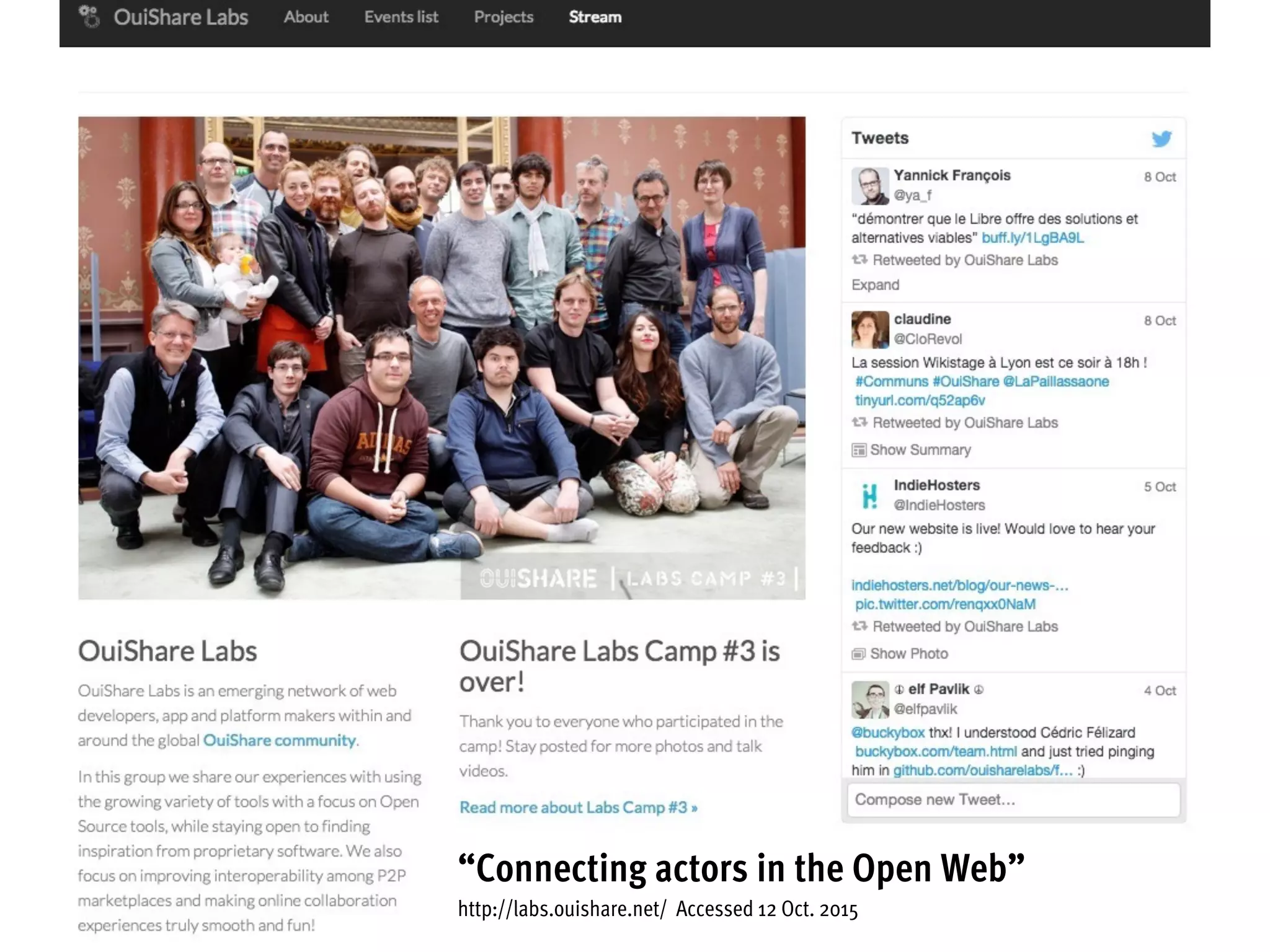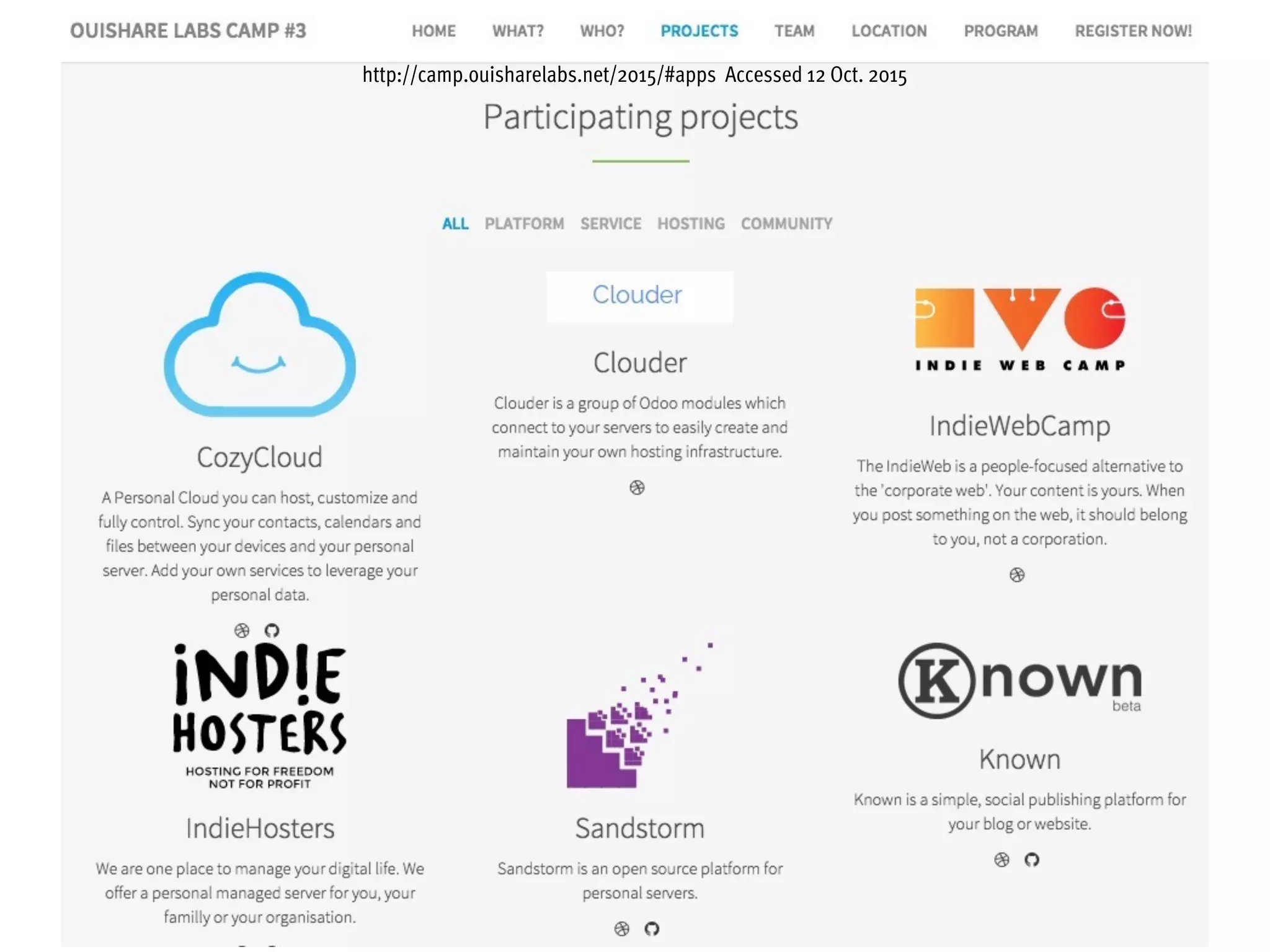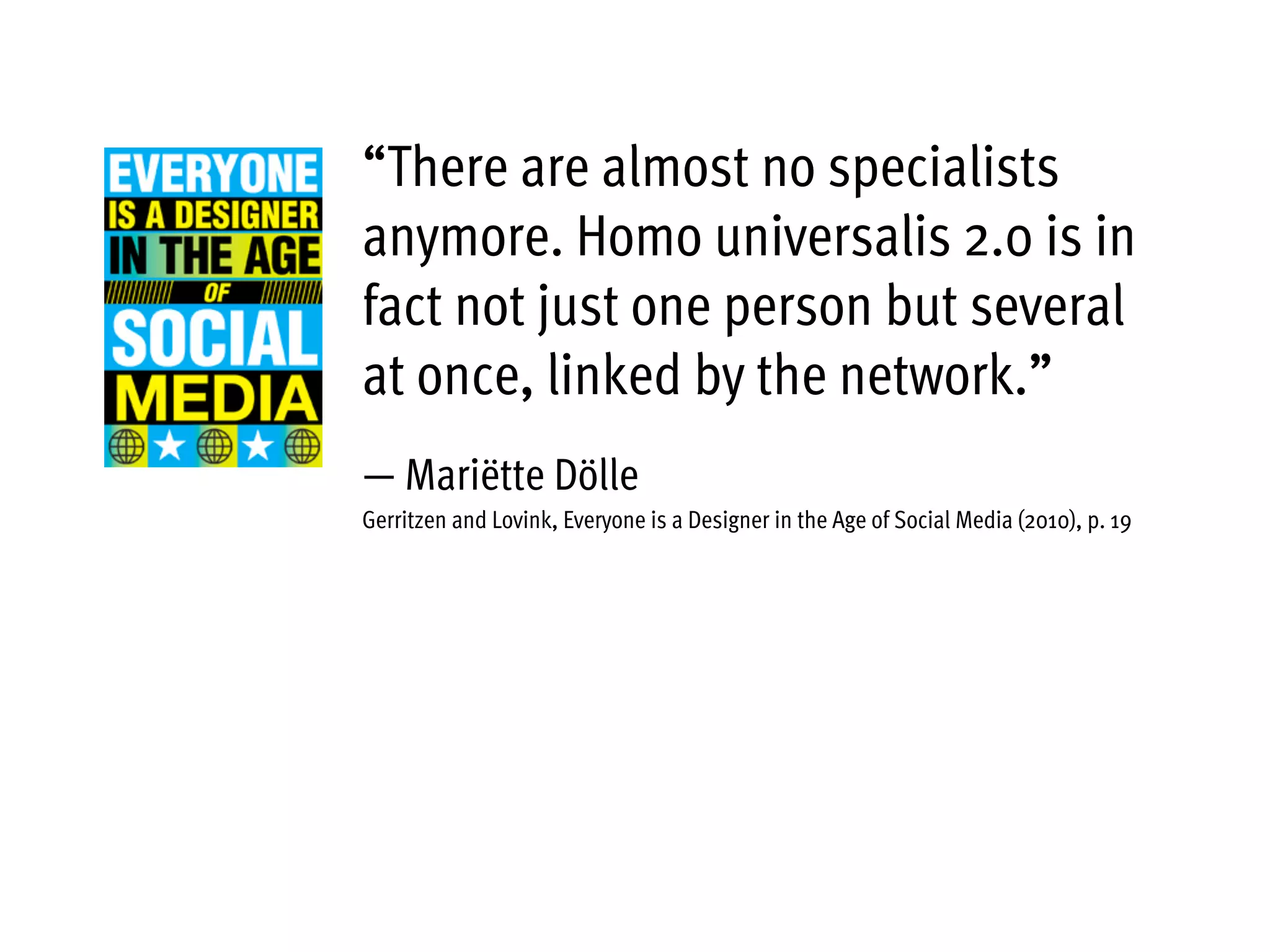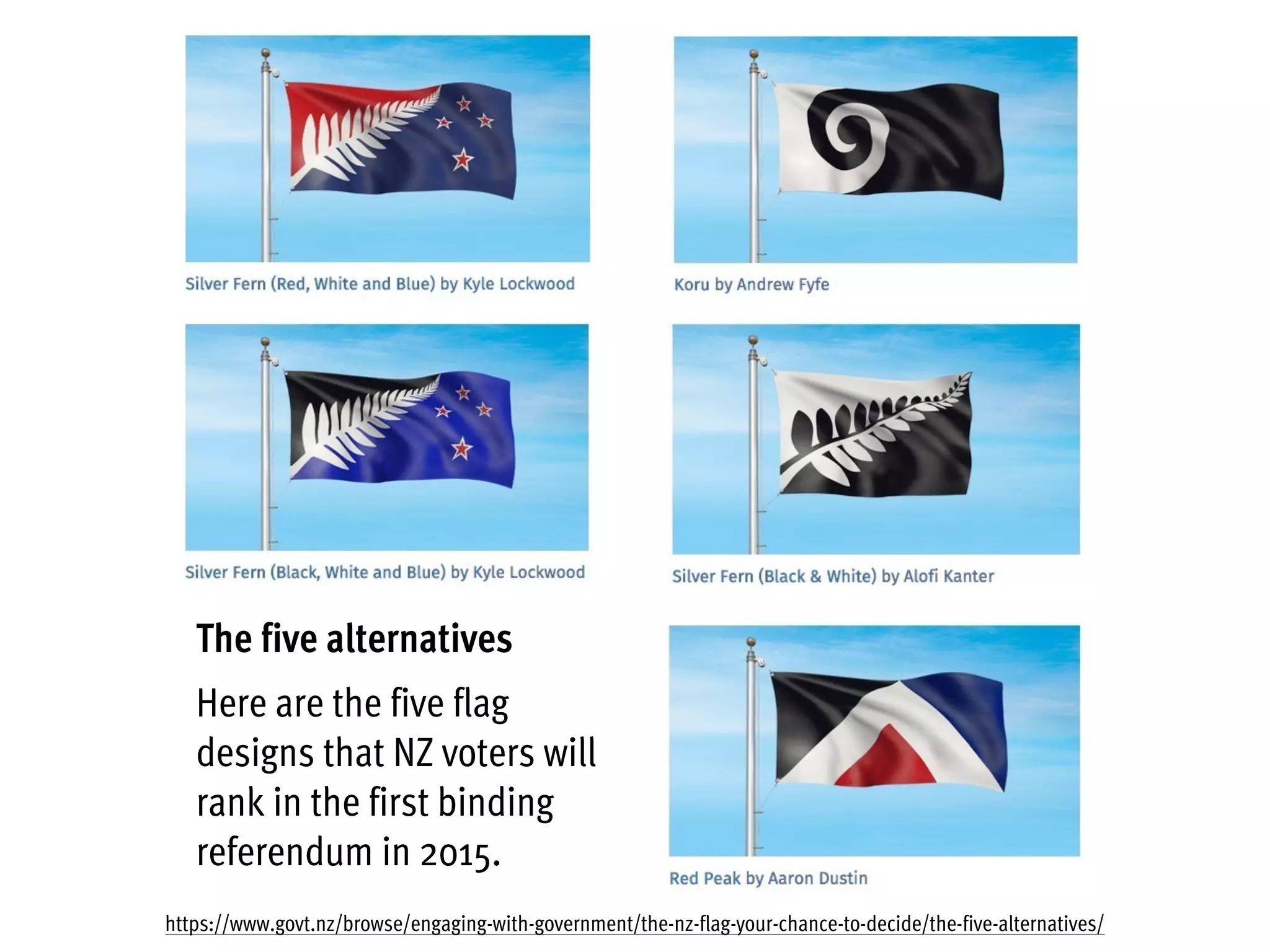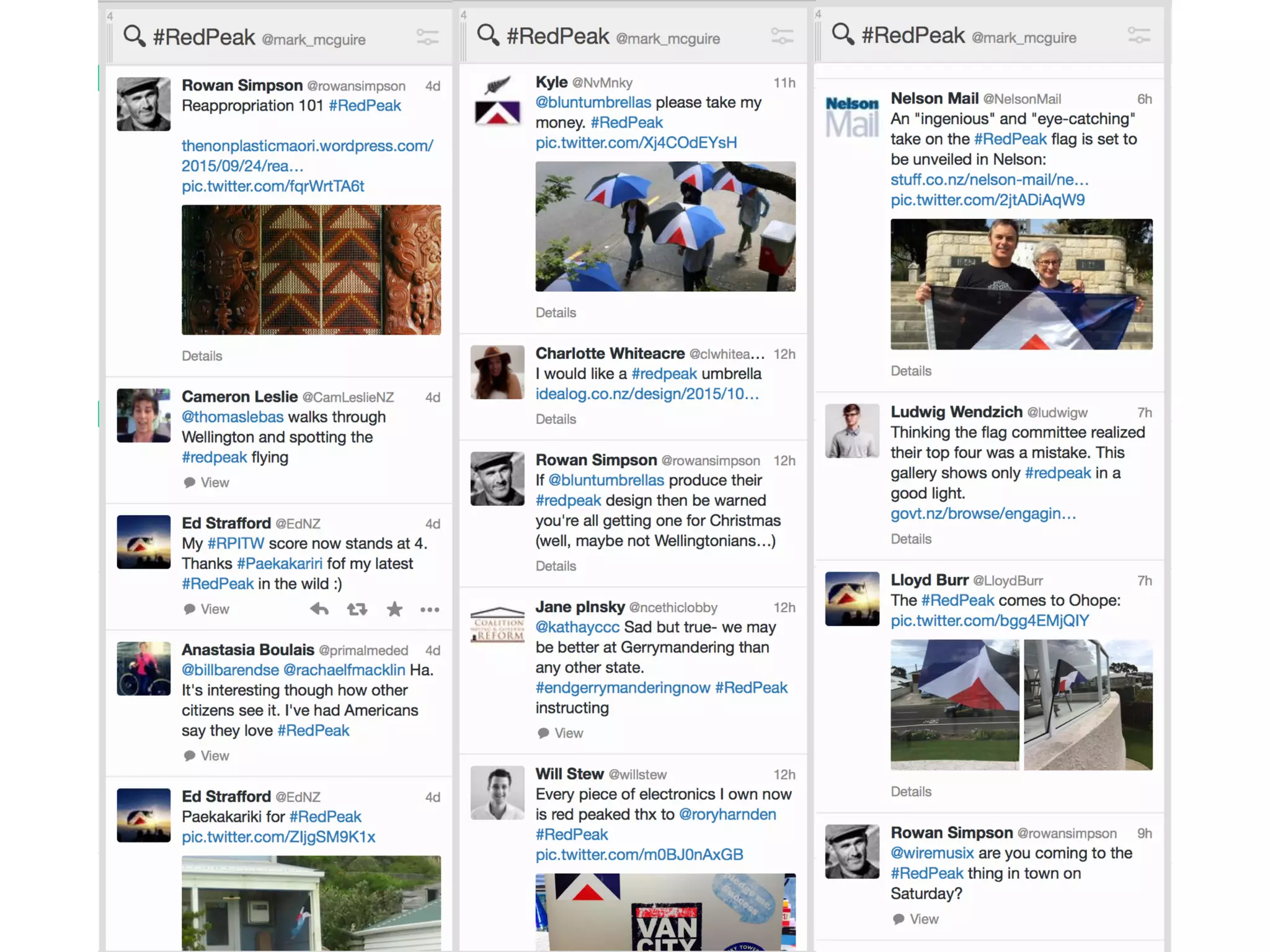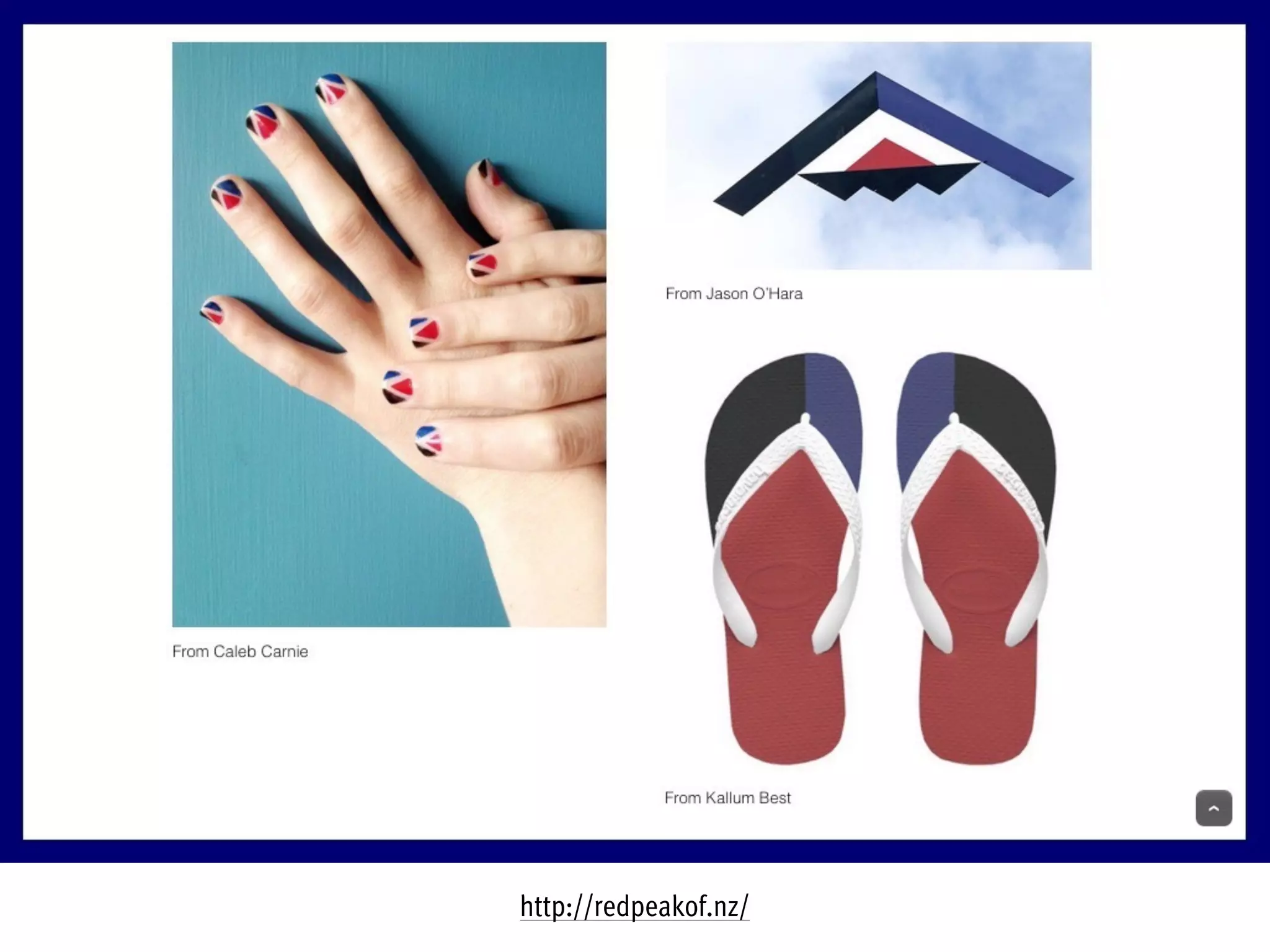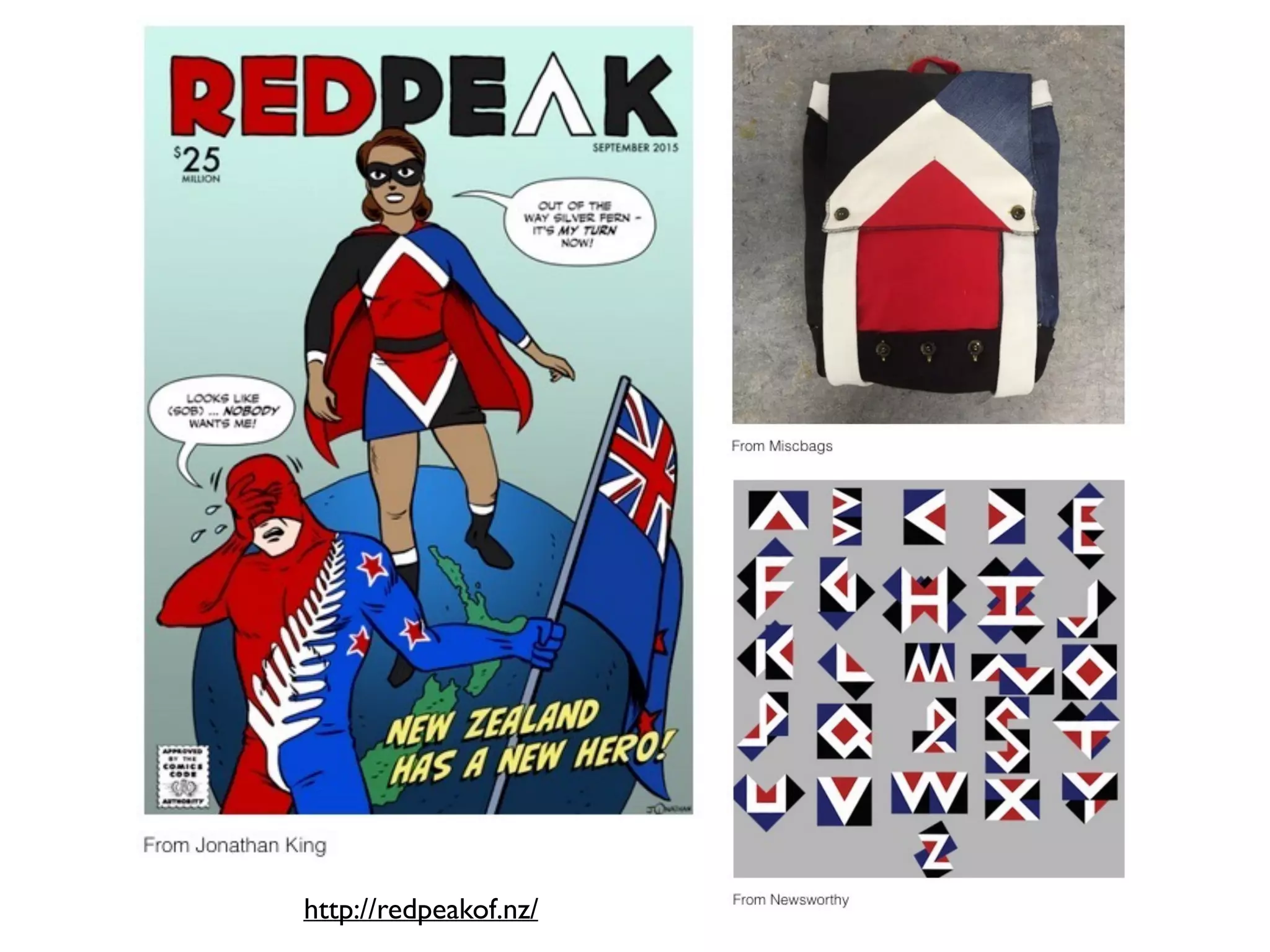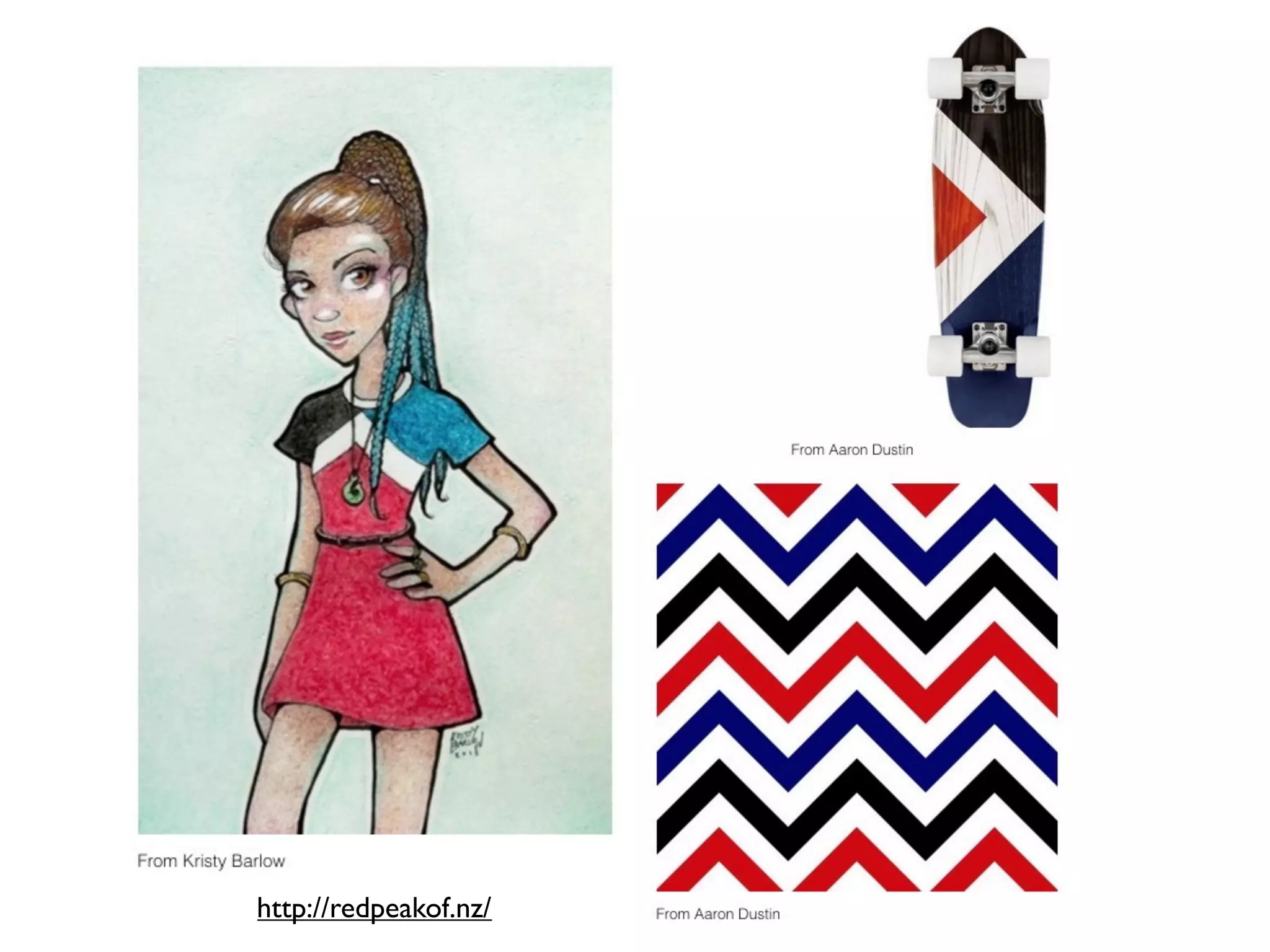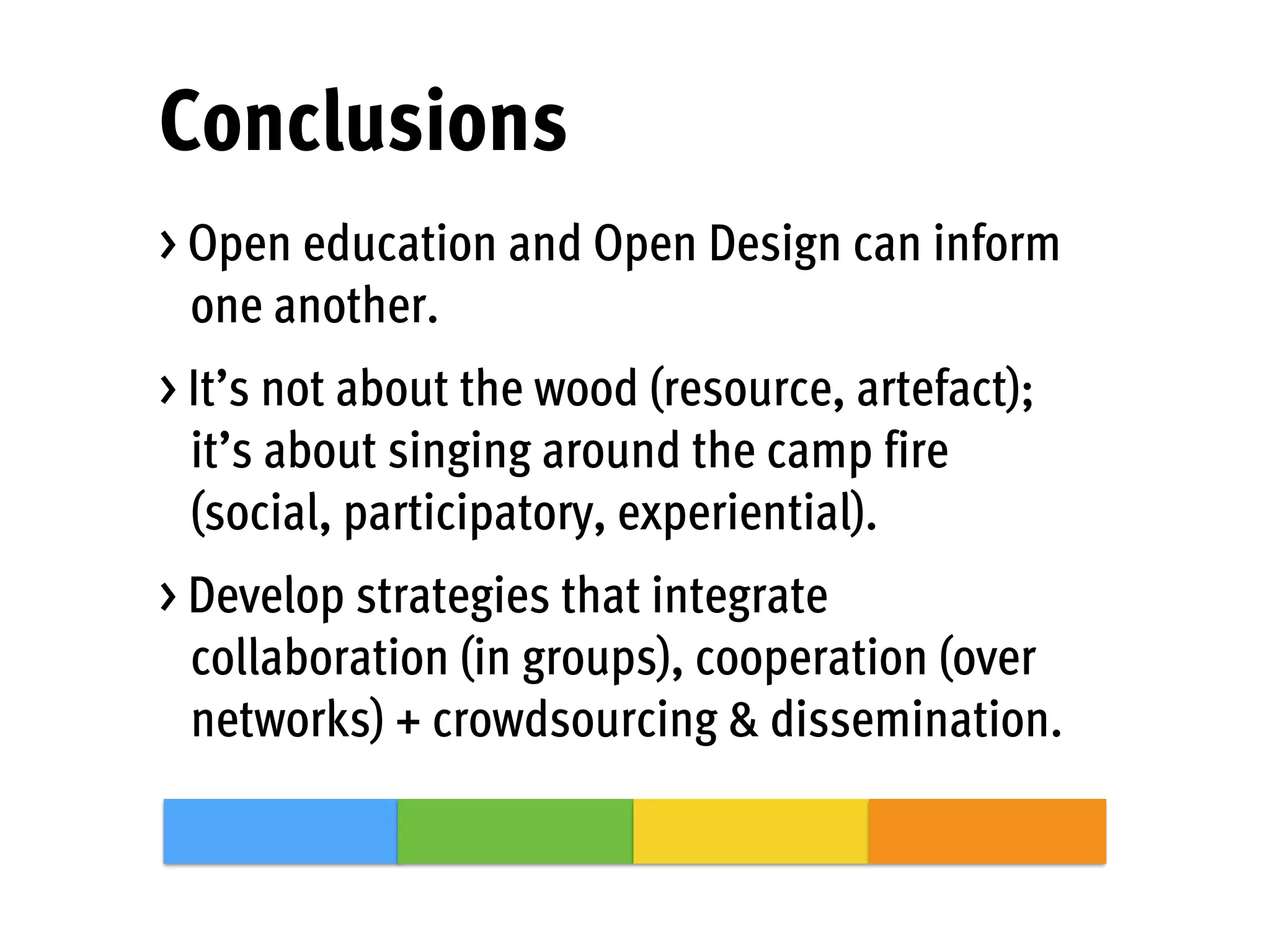The document discusses the themes of collaboration, open education, and open design, emphasizing the importance of shared goals, community engagement, and the integration of digital tools for building knowledge networks. It highlights the significance of open content and the democratization of design practices, as well as the necessity for interdisciplinary collaboration in addressing complex problems. Ultimately, it encourages the development of strategies that foster collaboration and participation in both educational and design contexts.
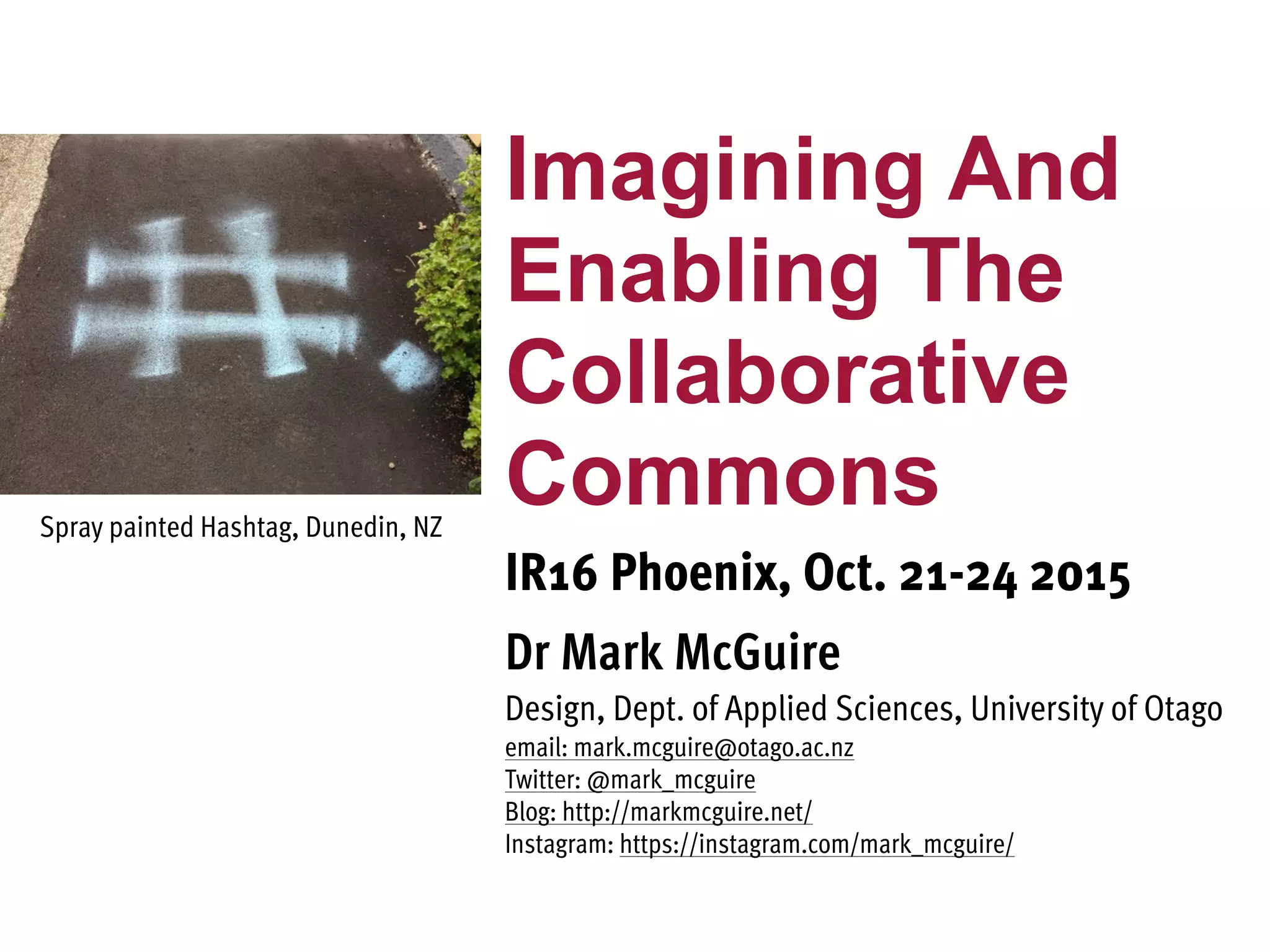
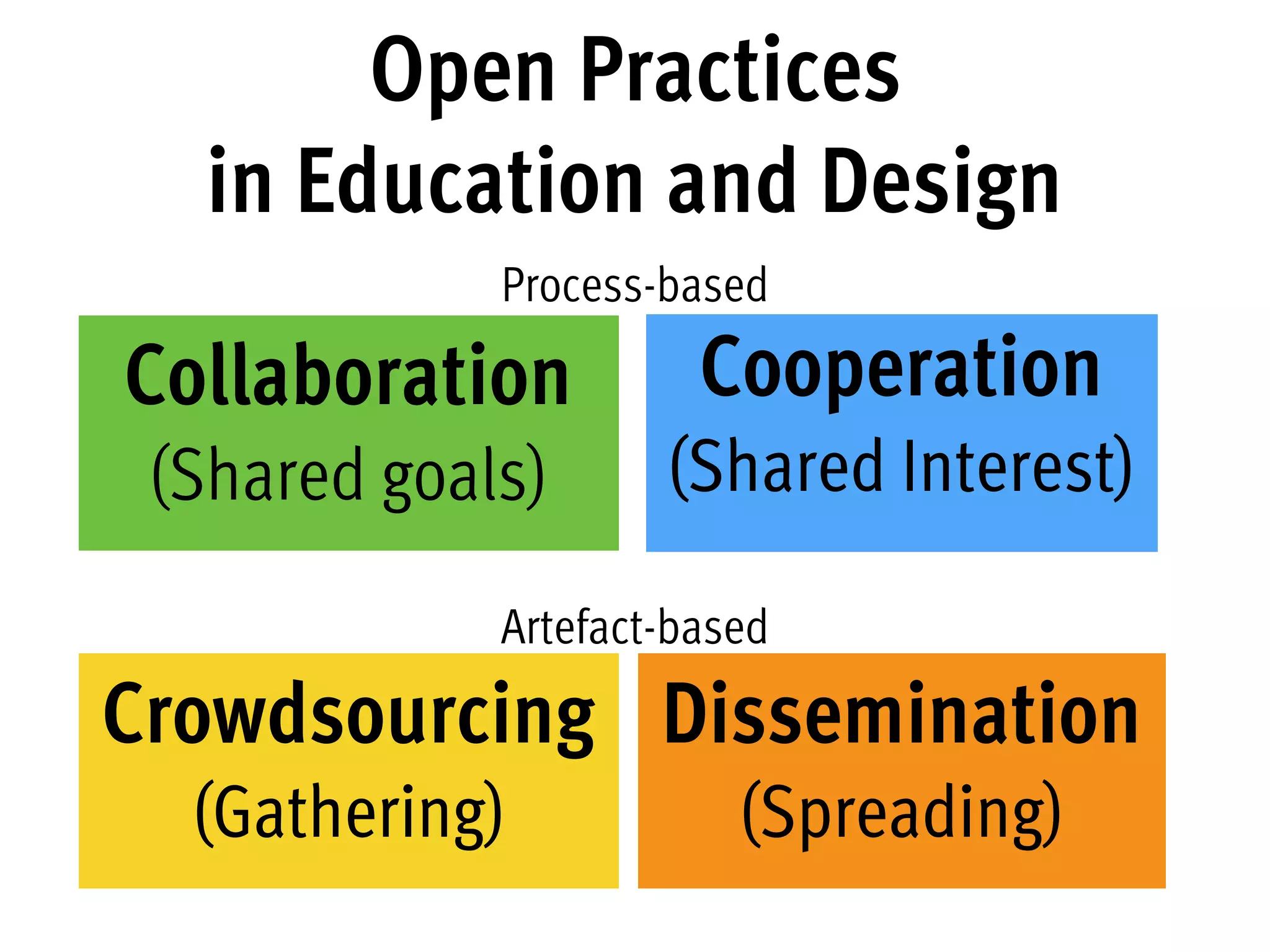
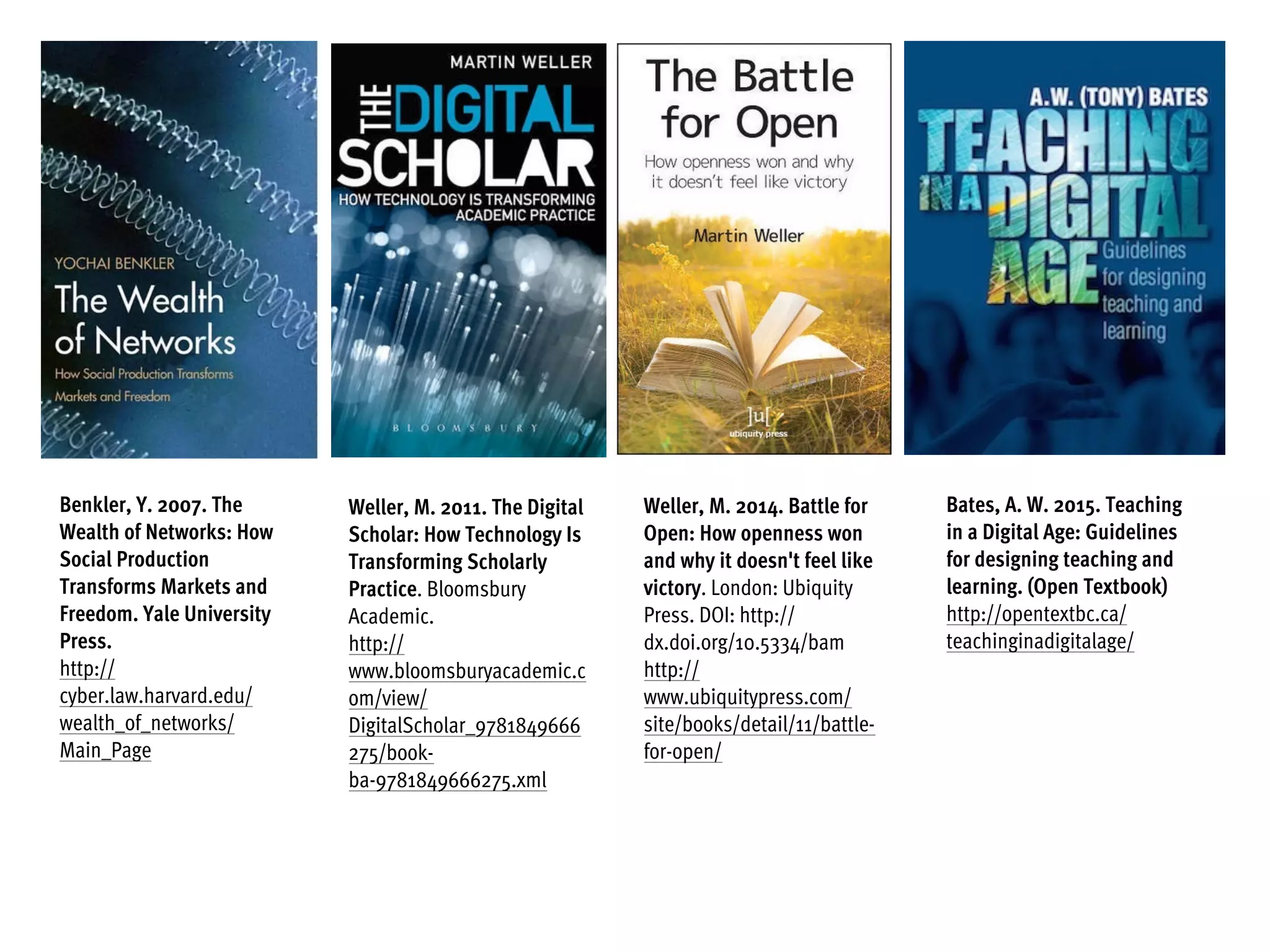
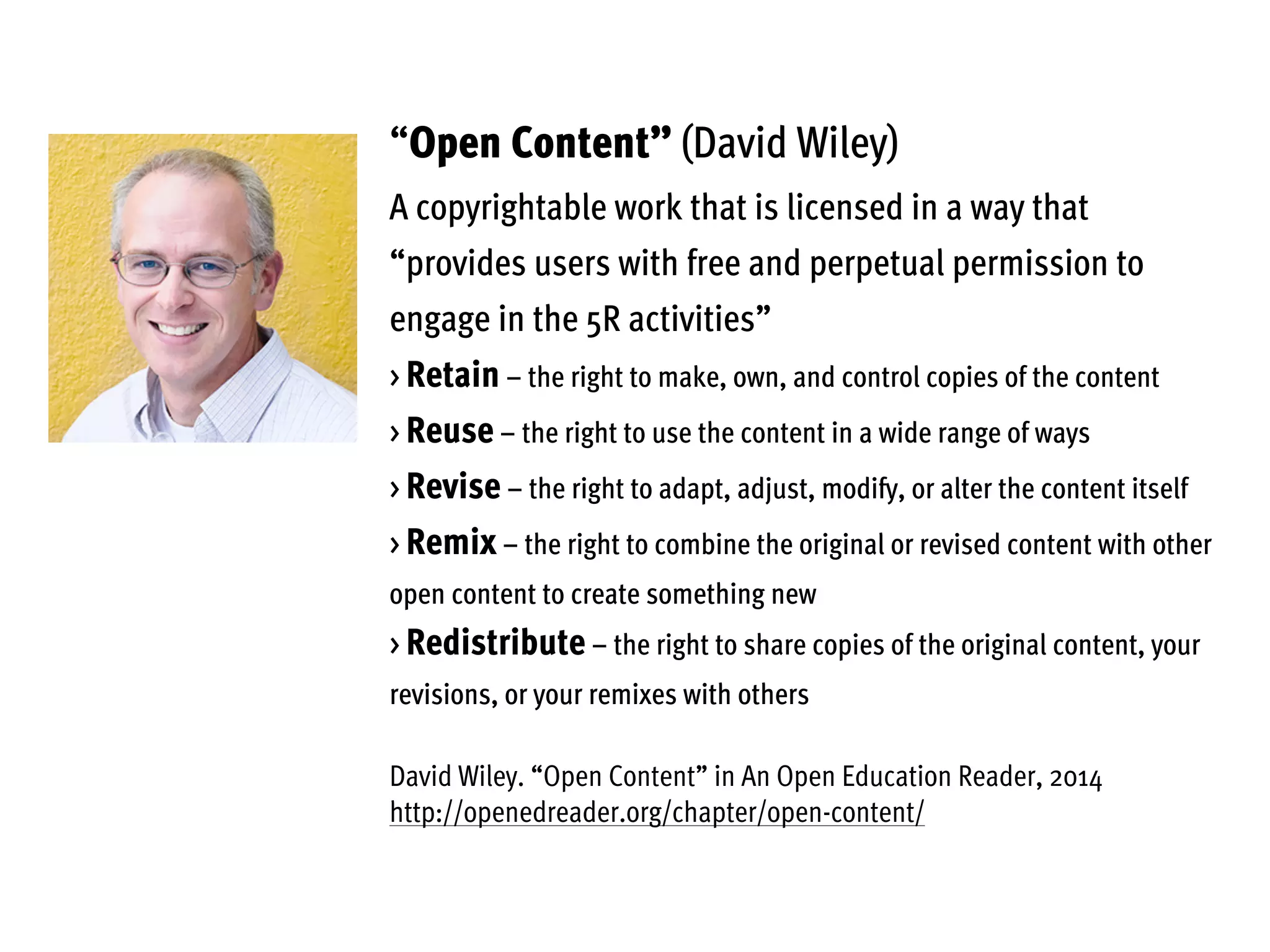
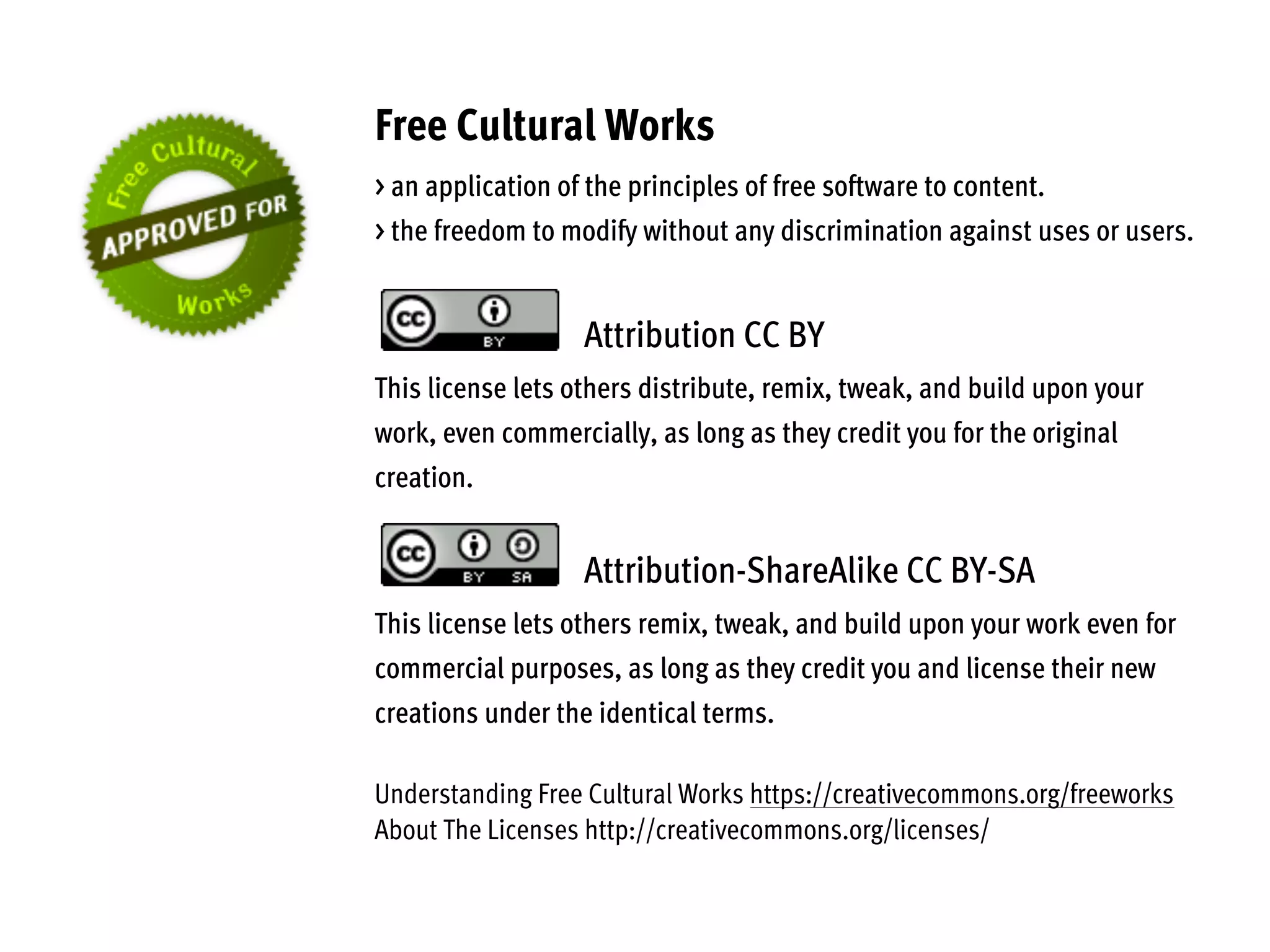
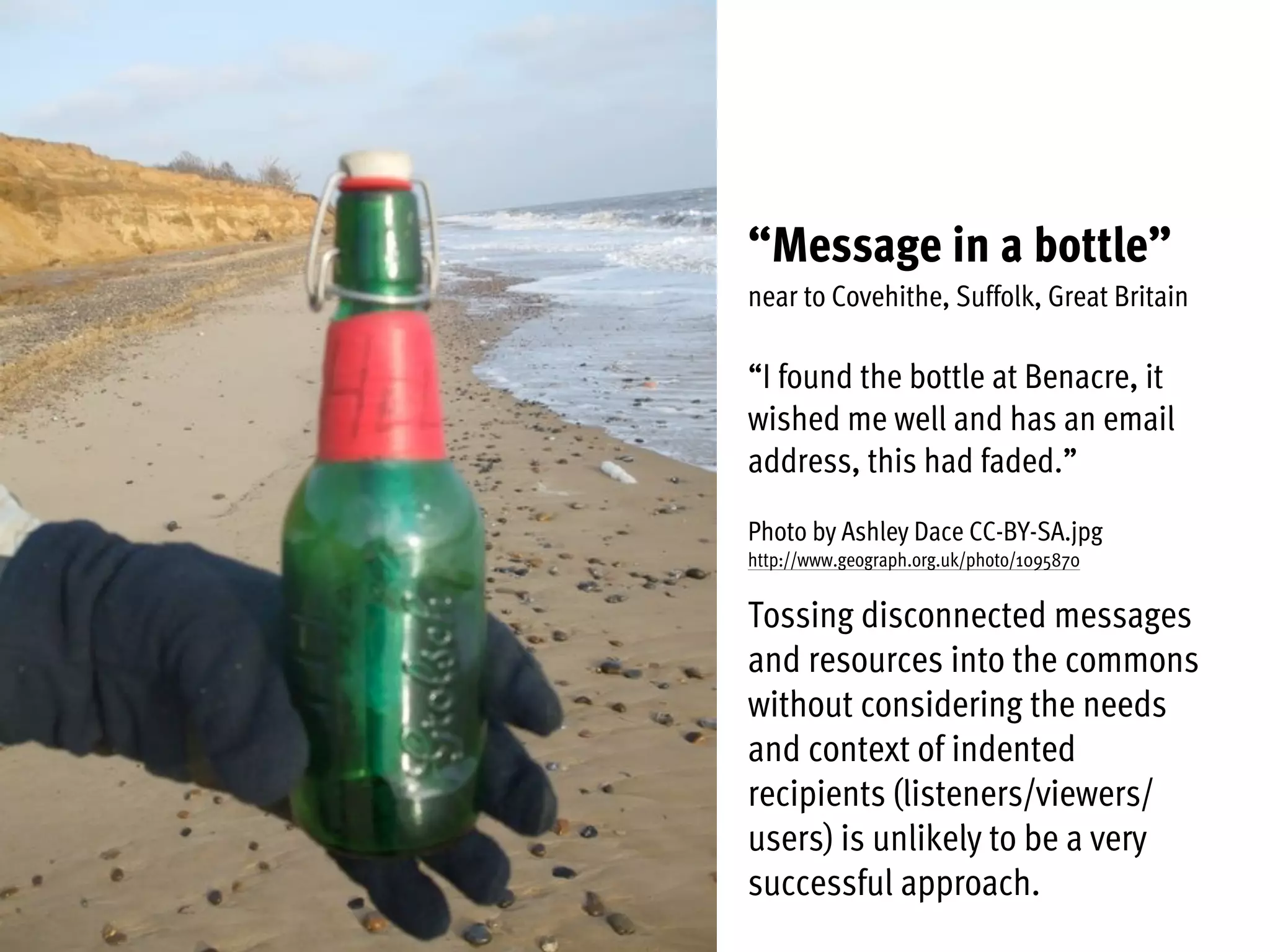
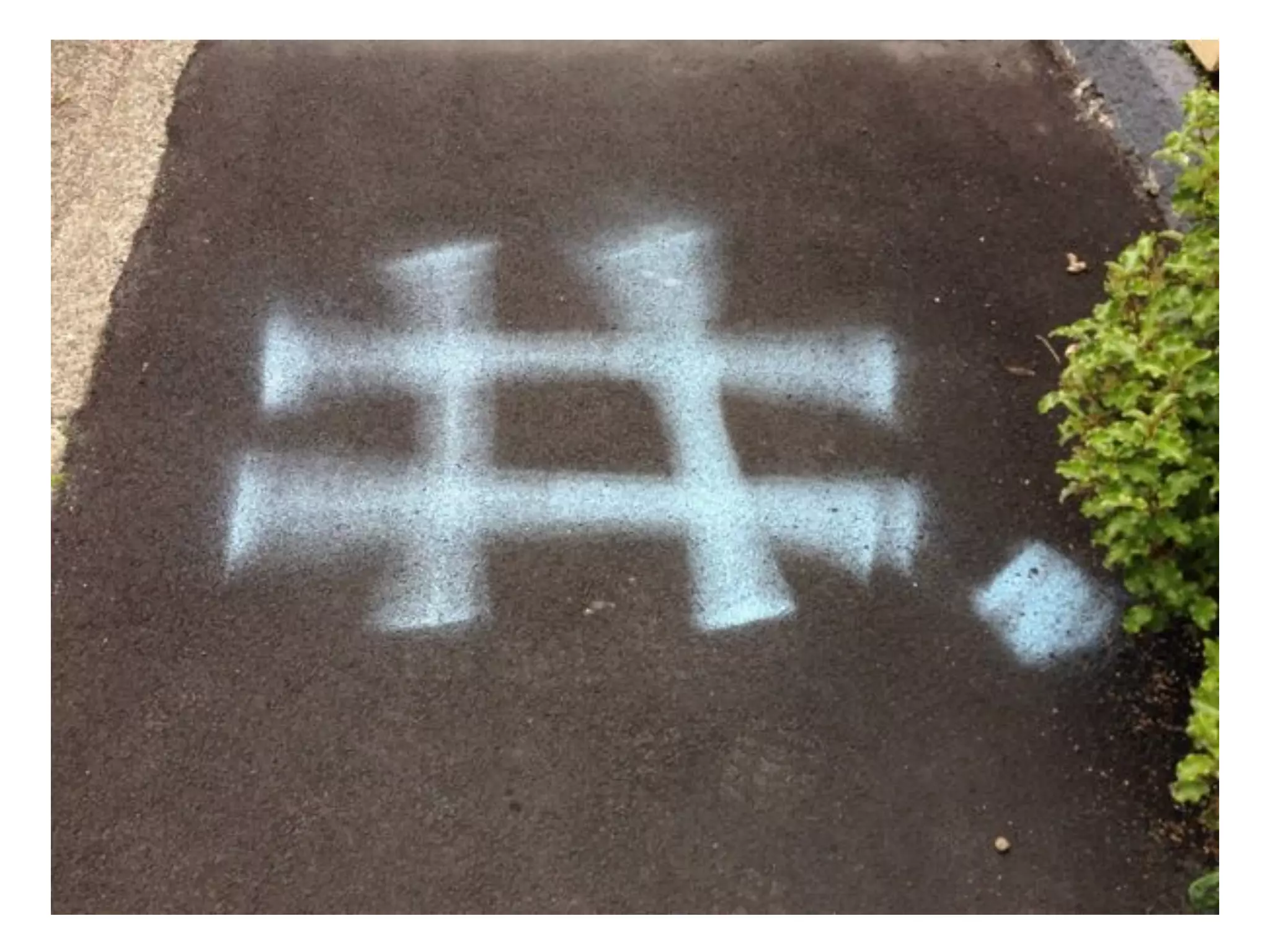
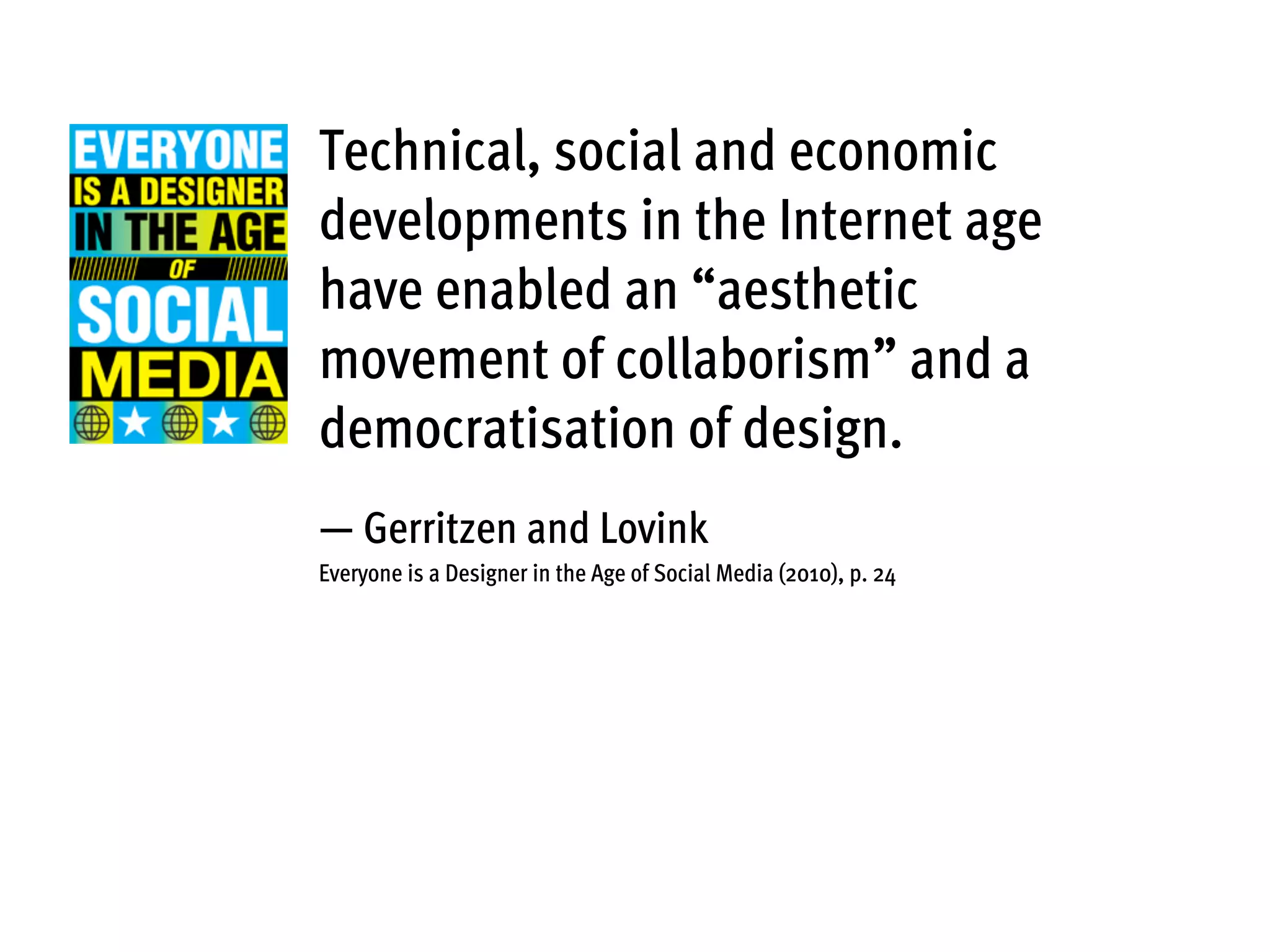
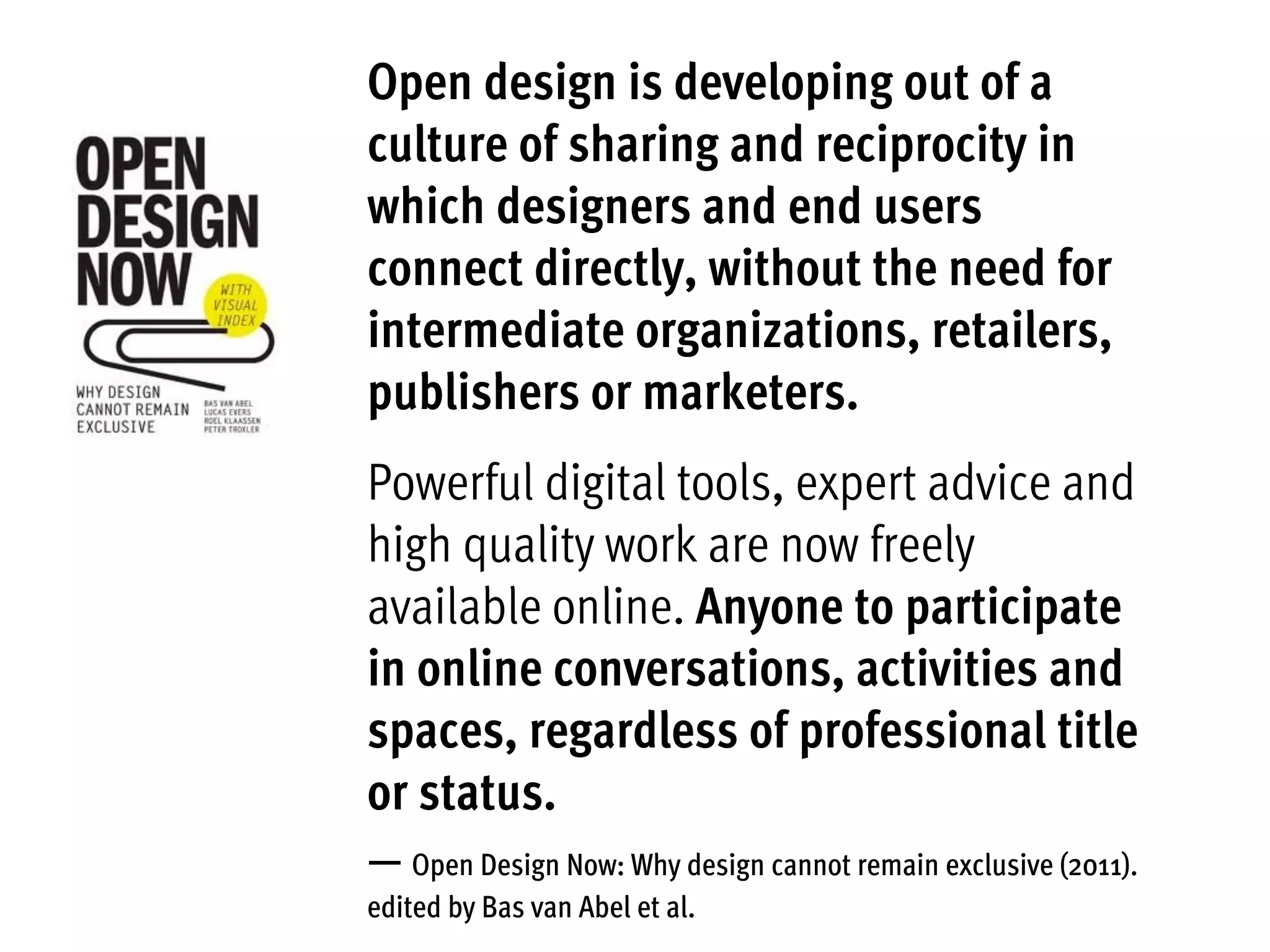
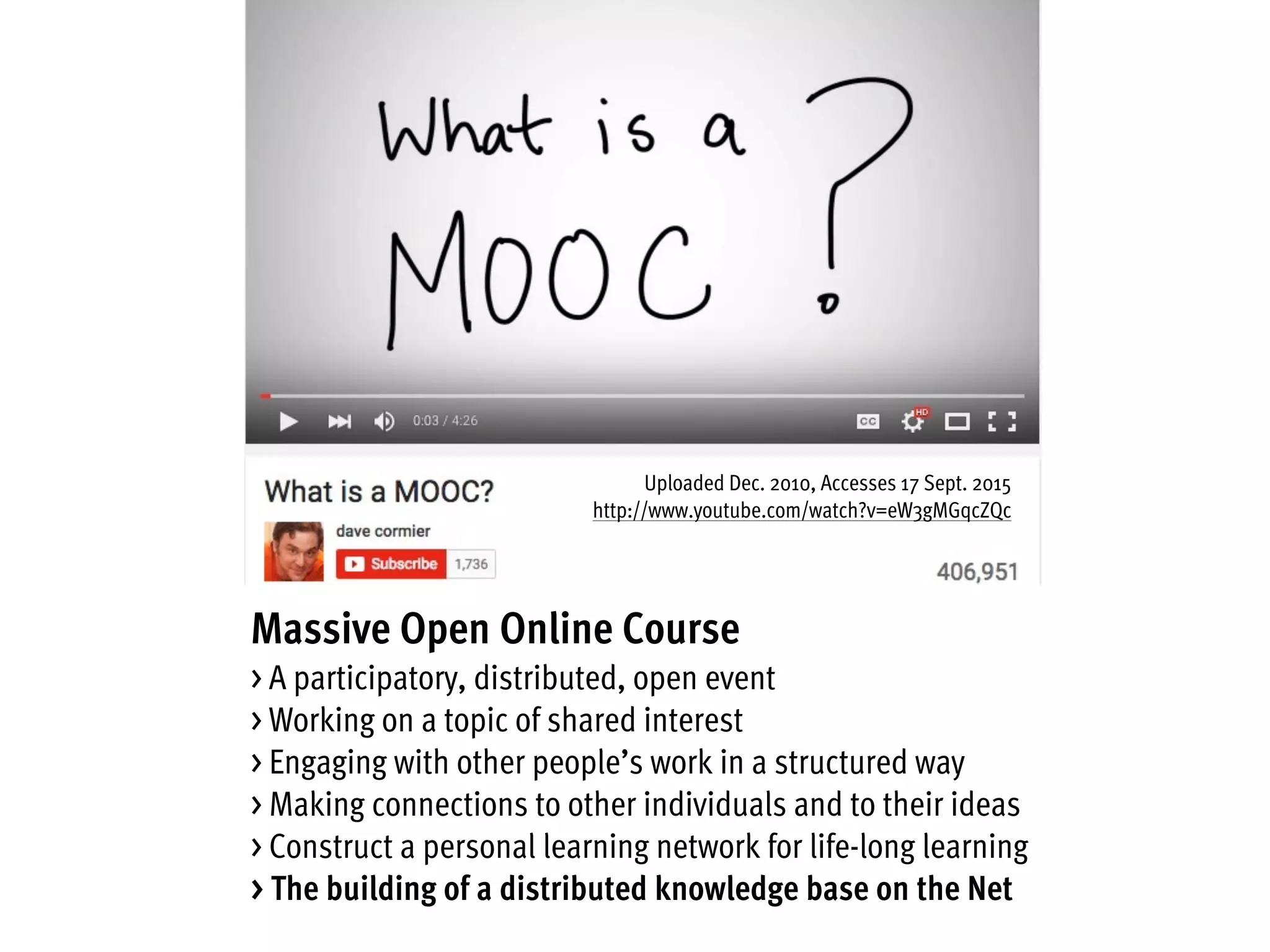
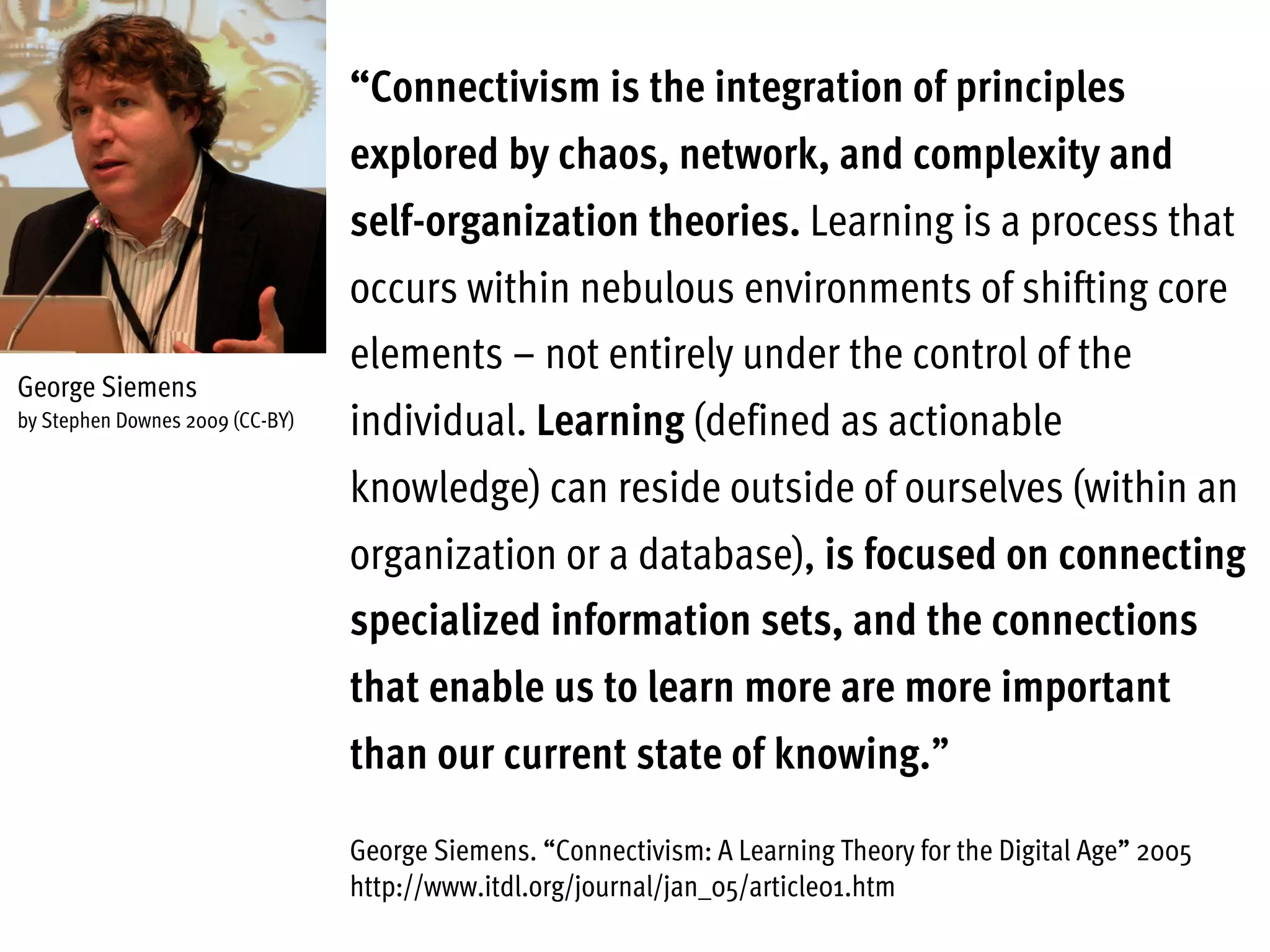
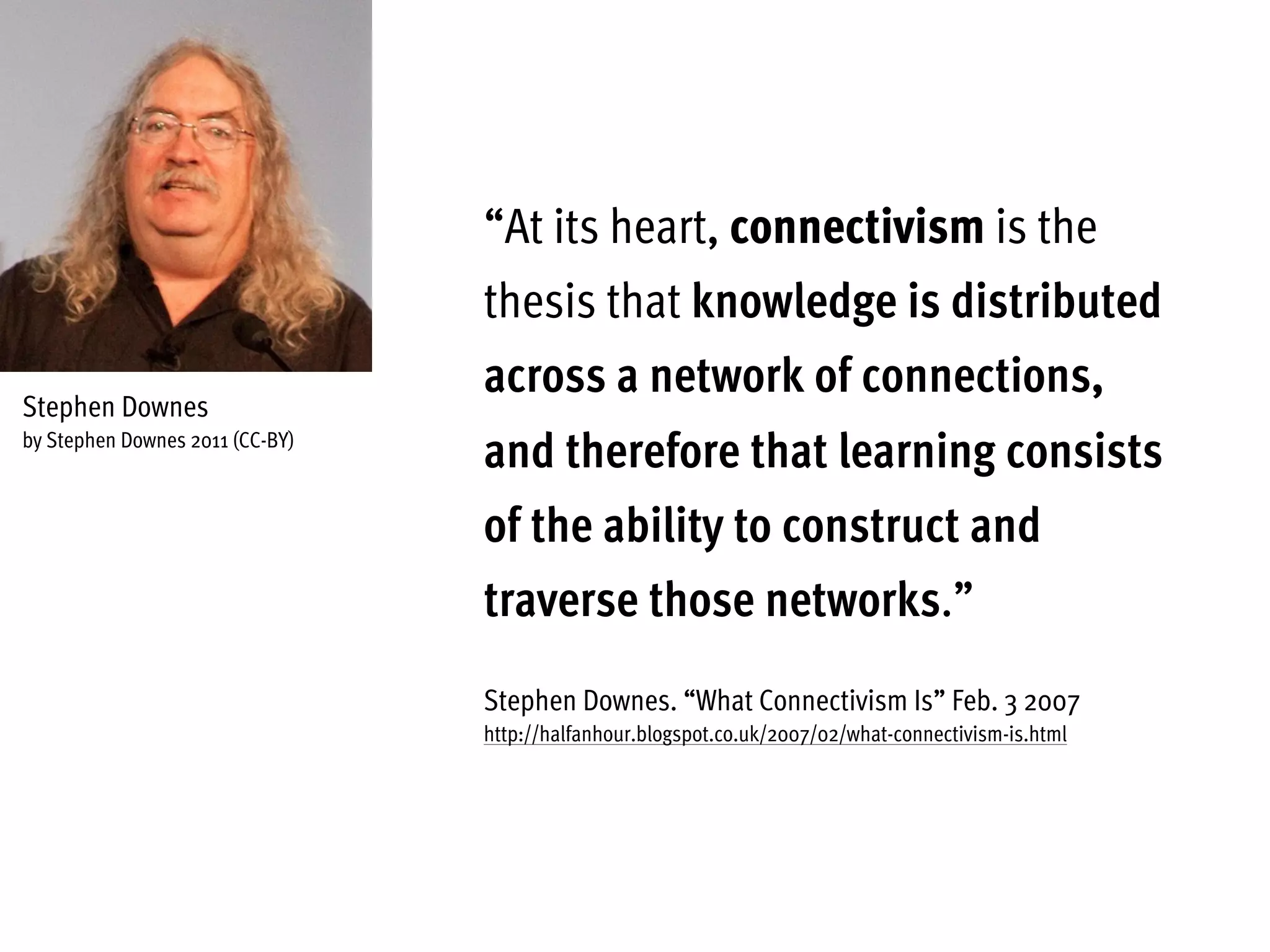
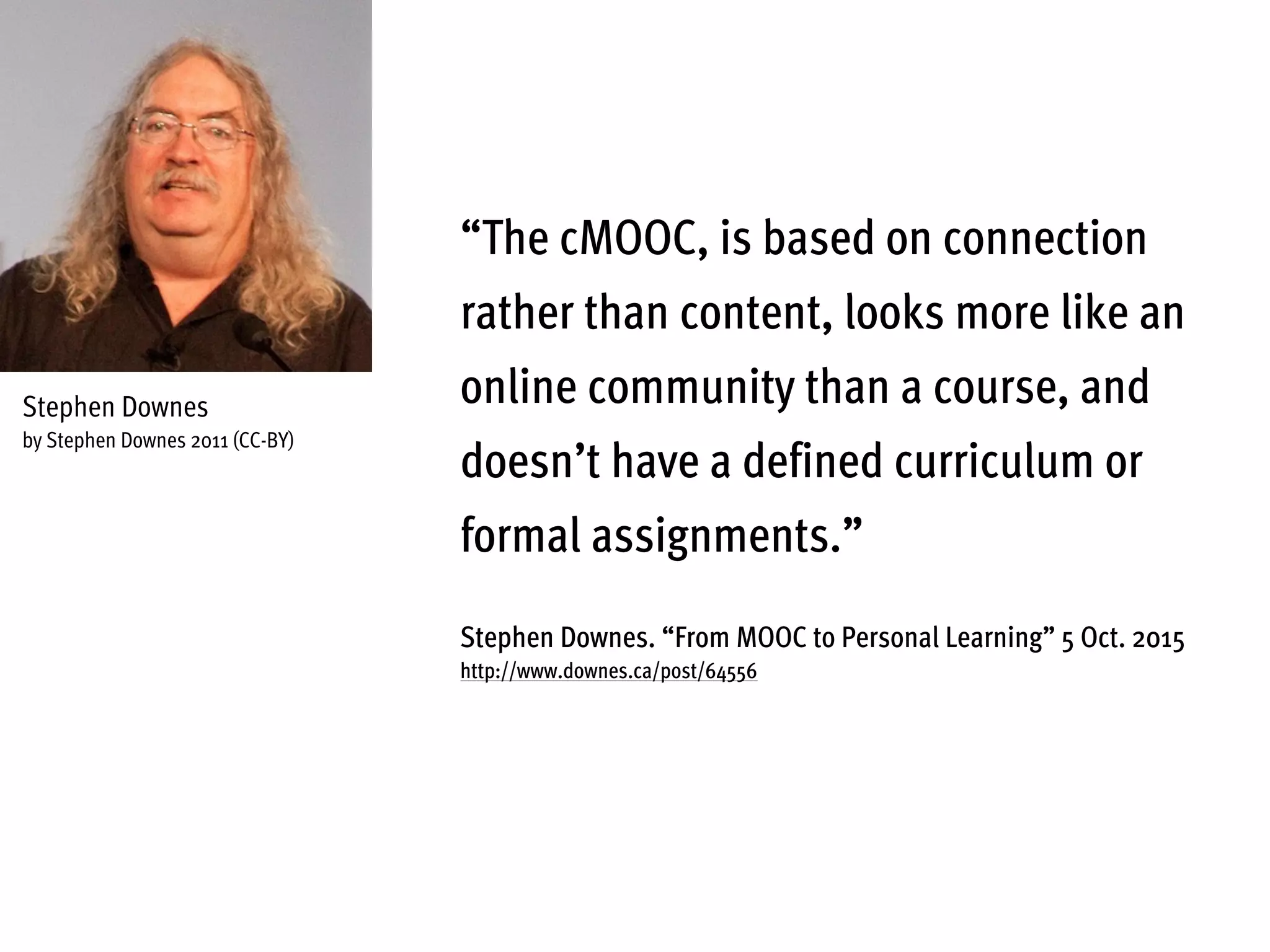
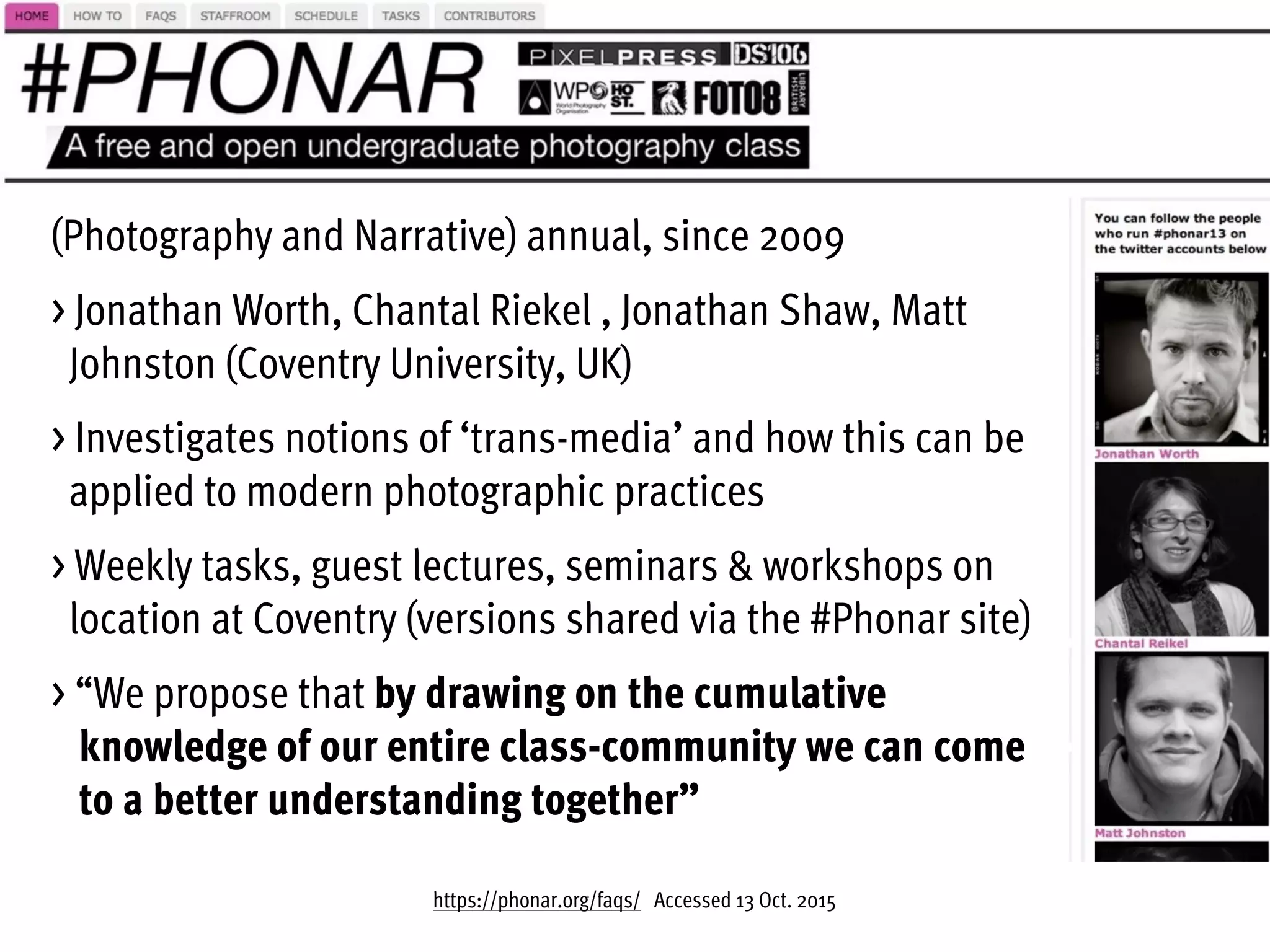
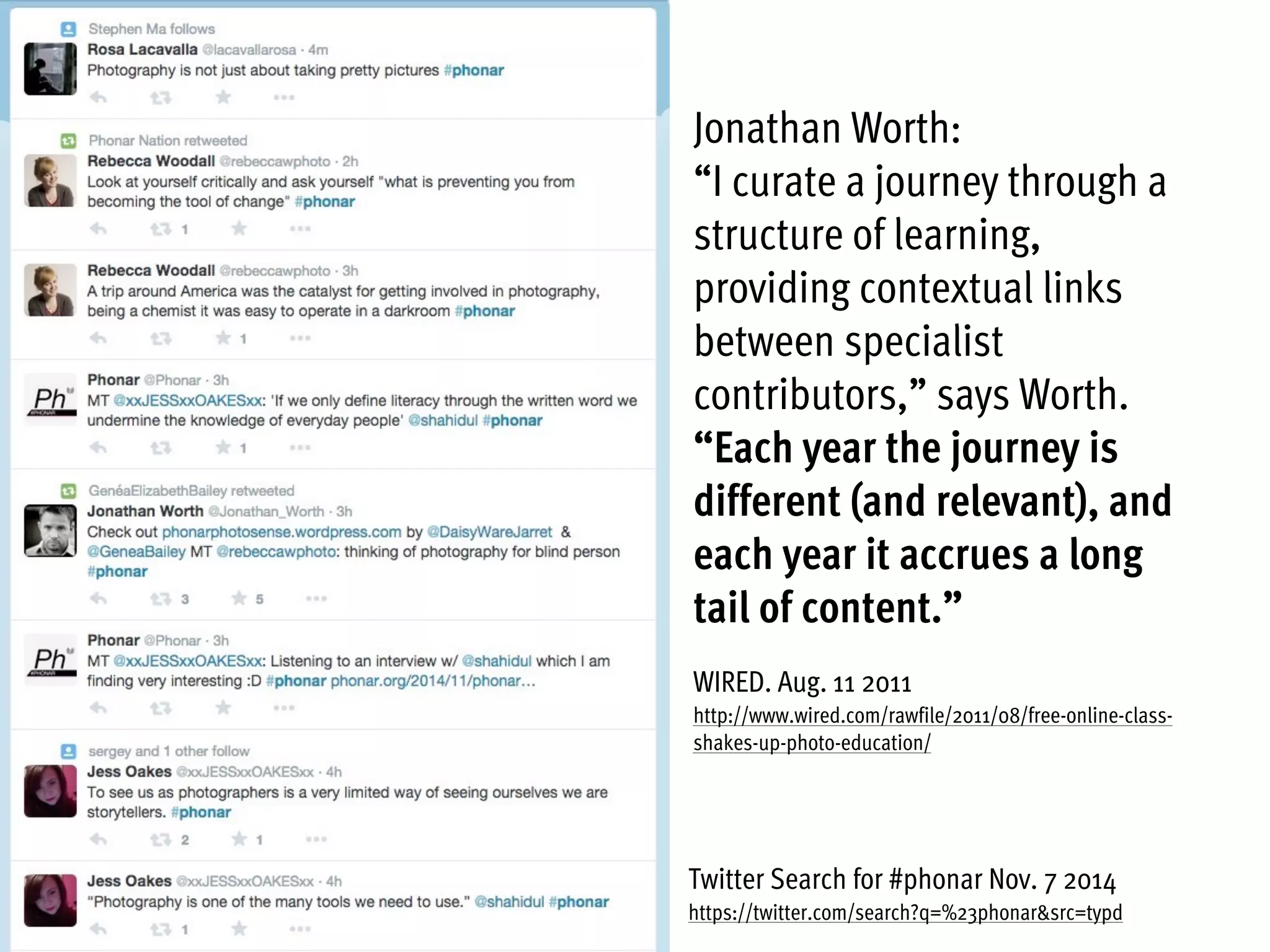
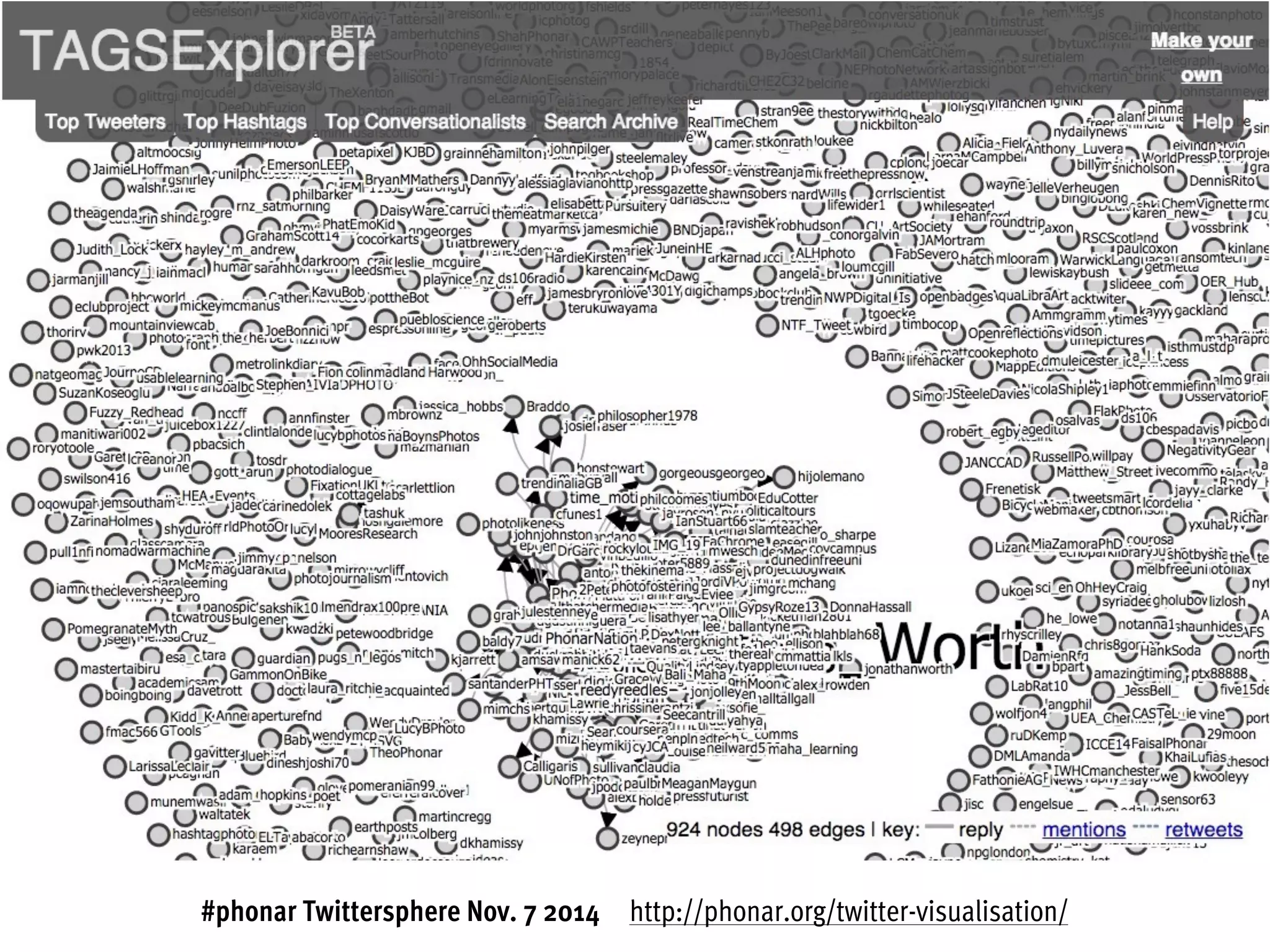
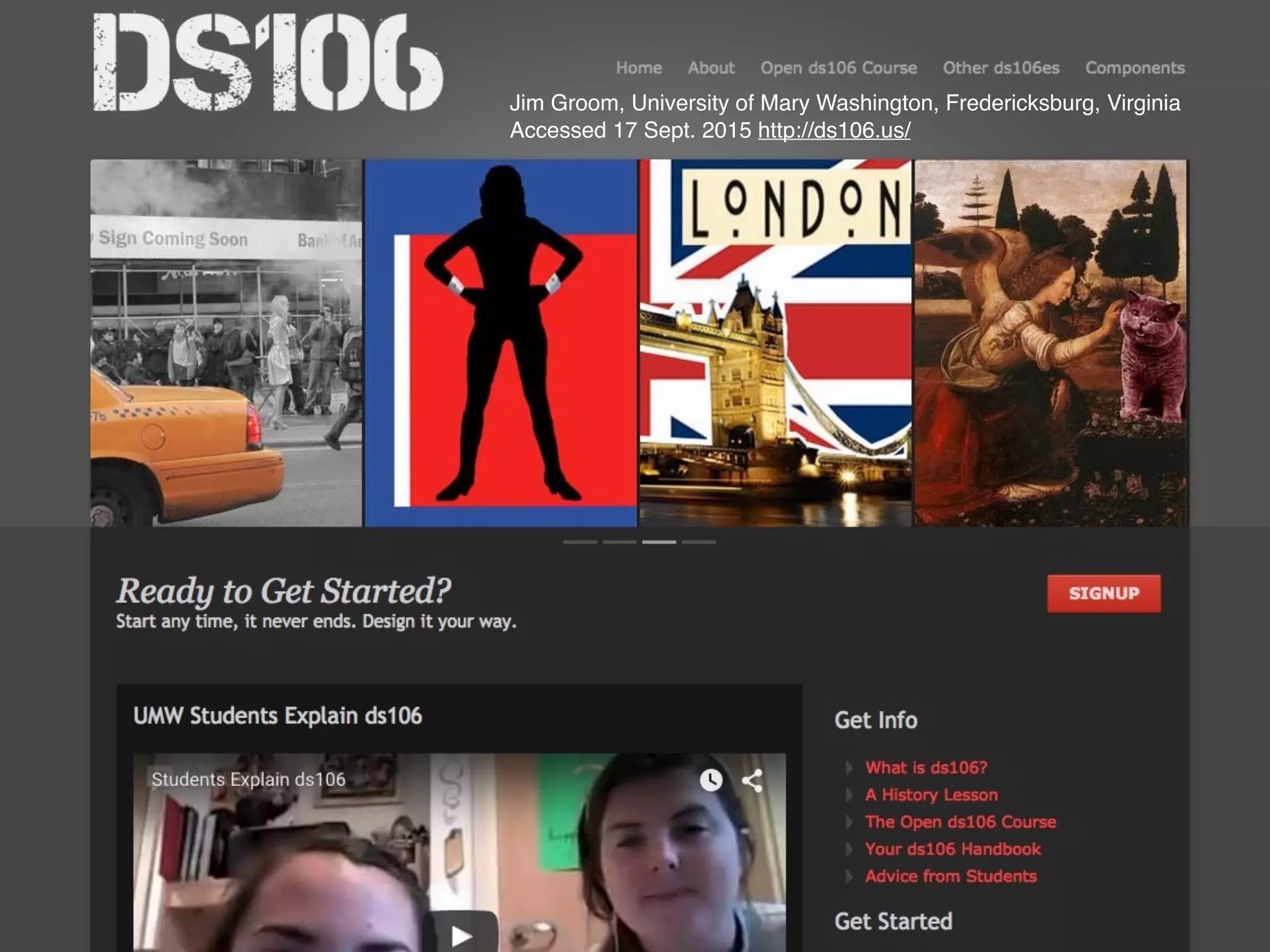
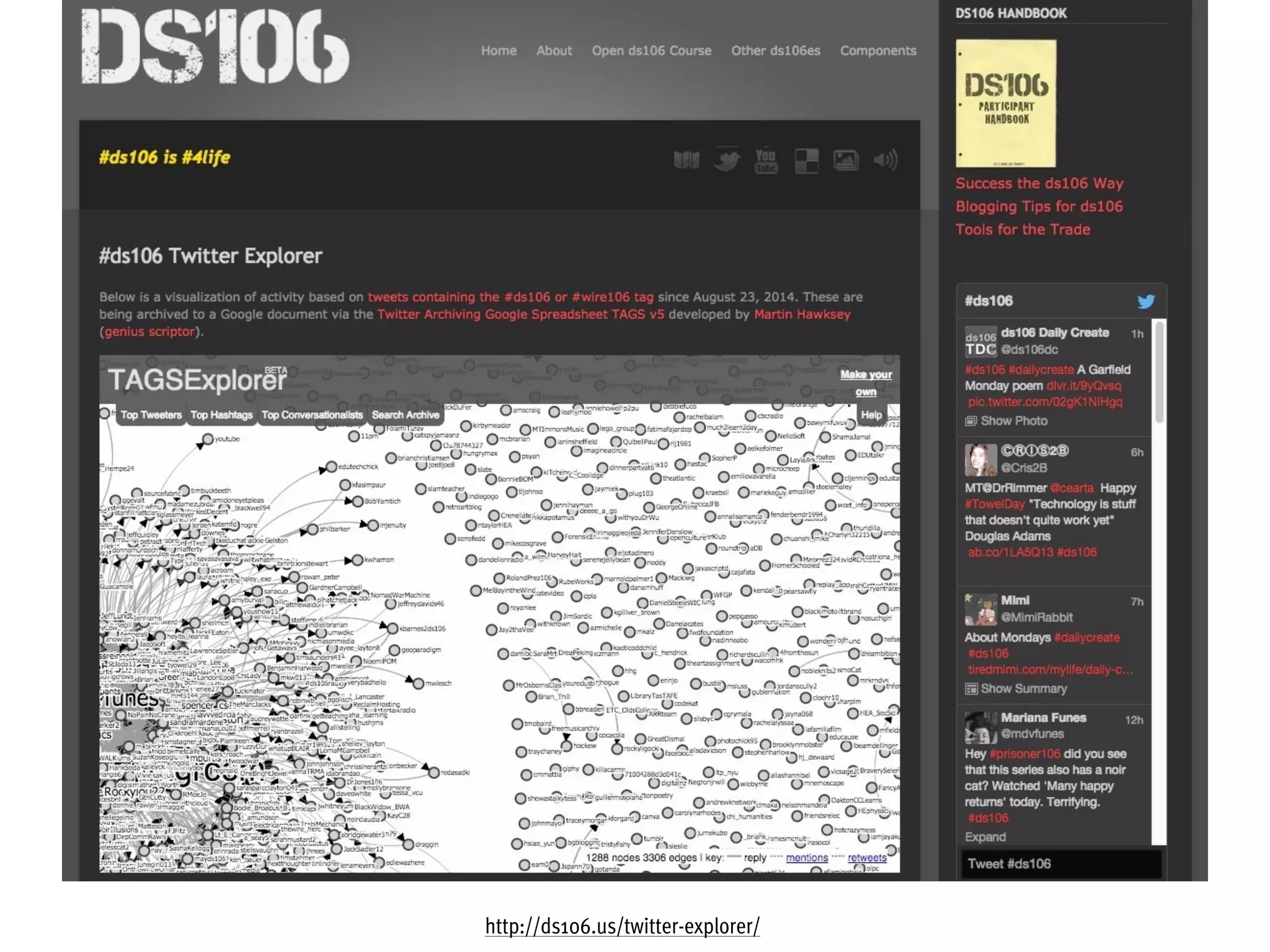
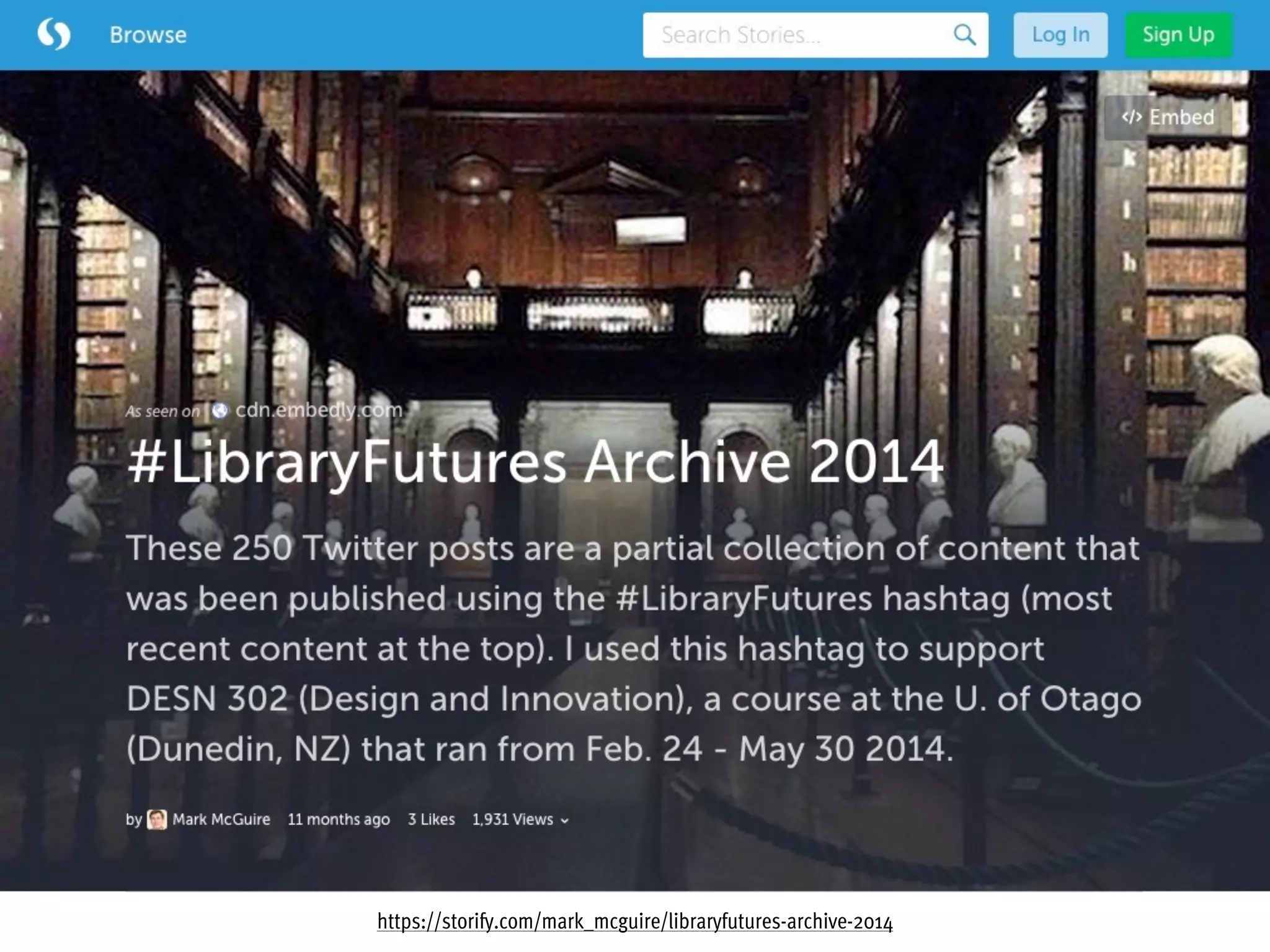
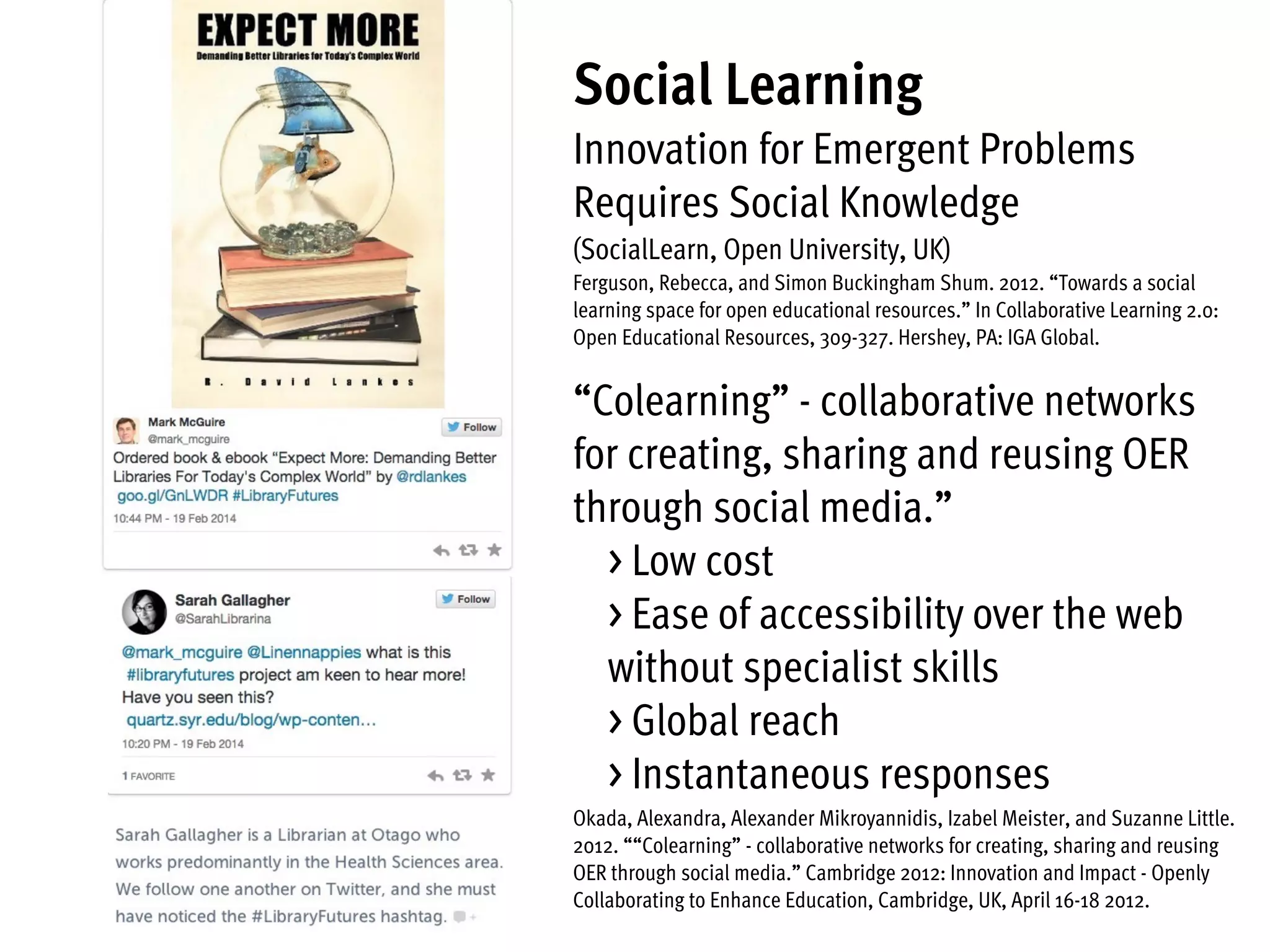
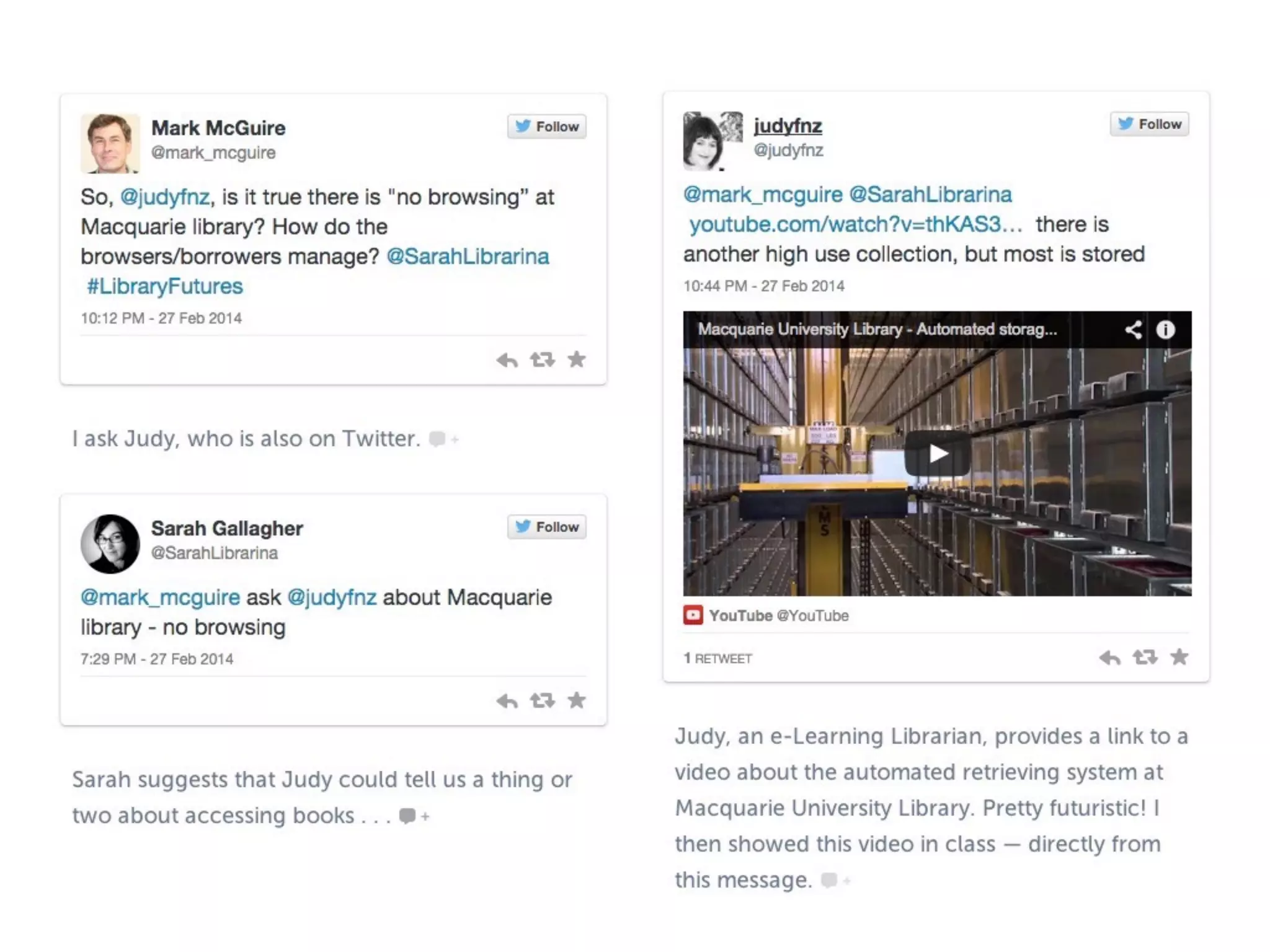
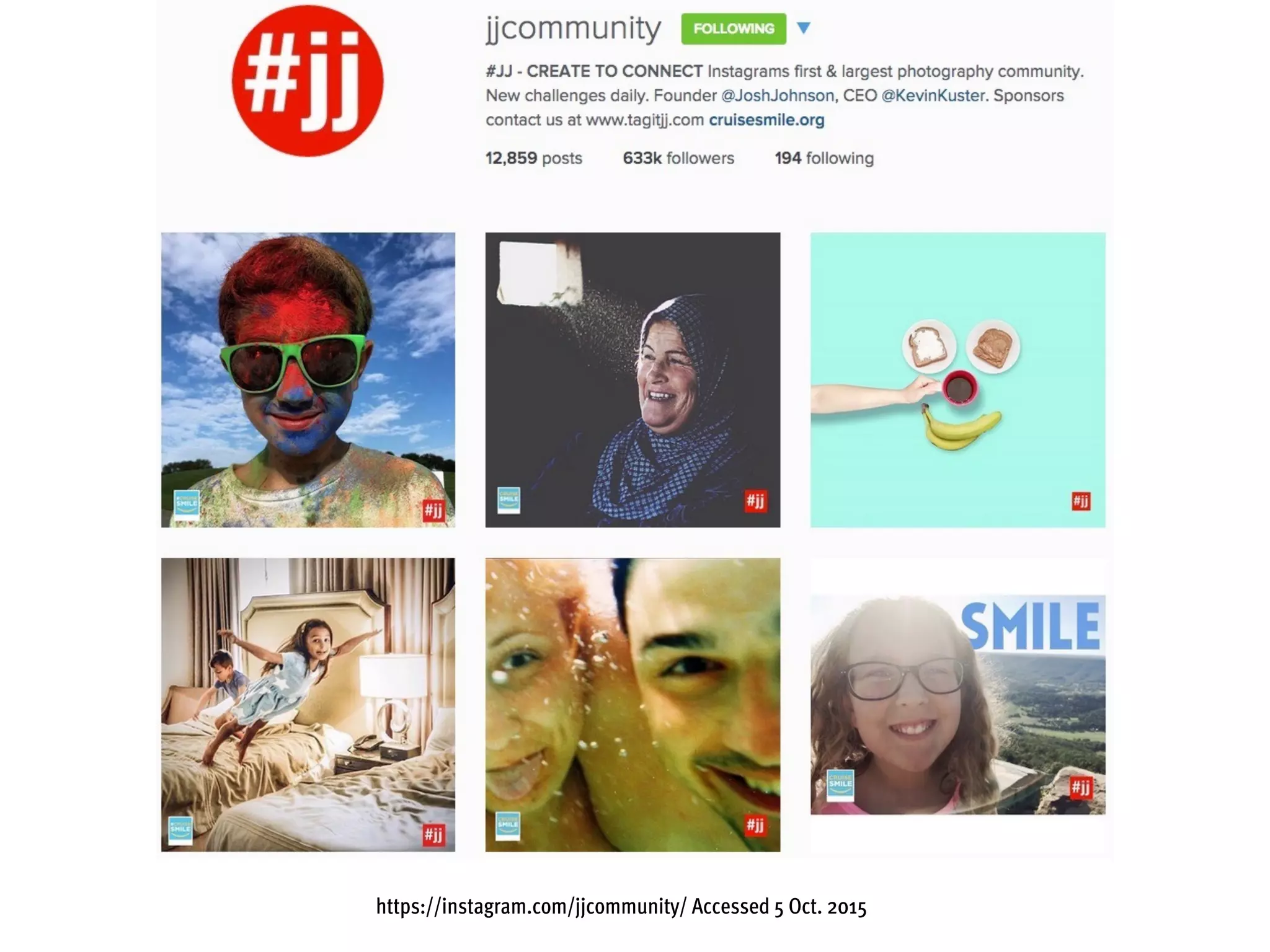
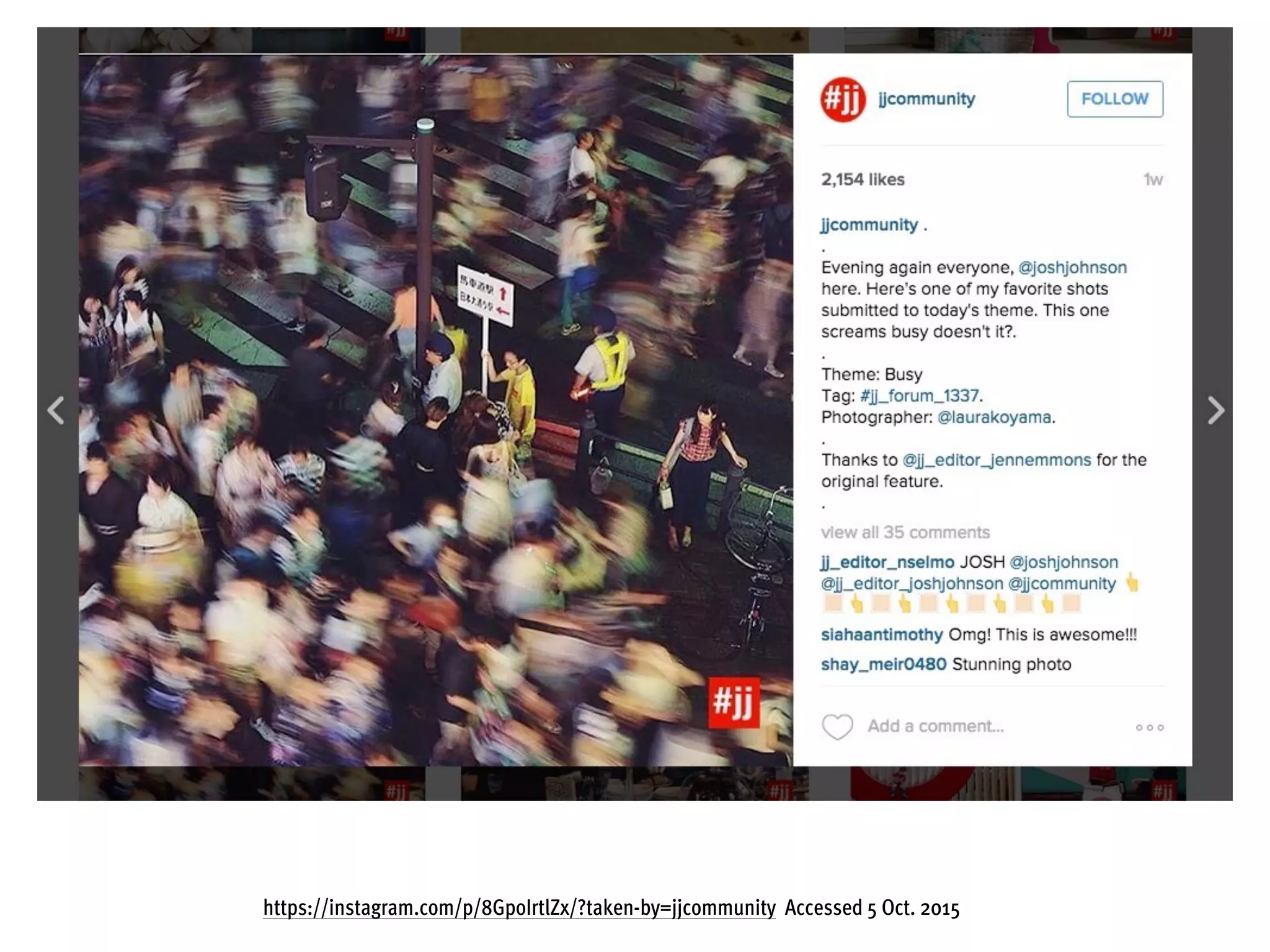
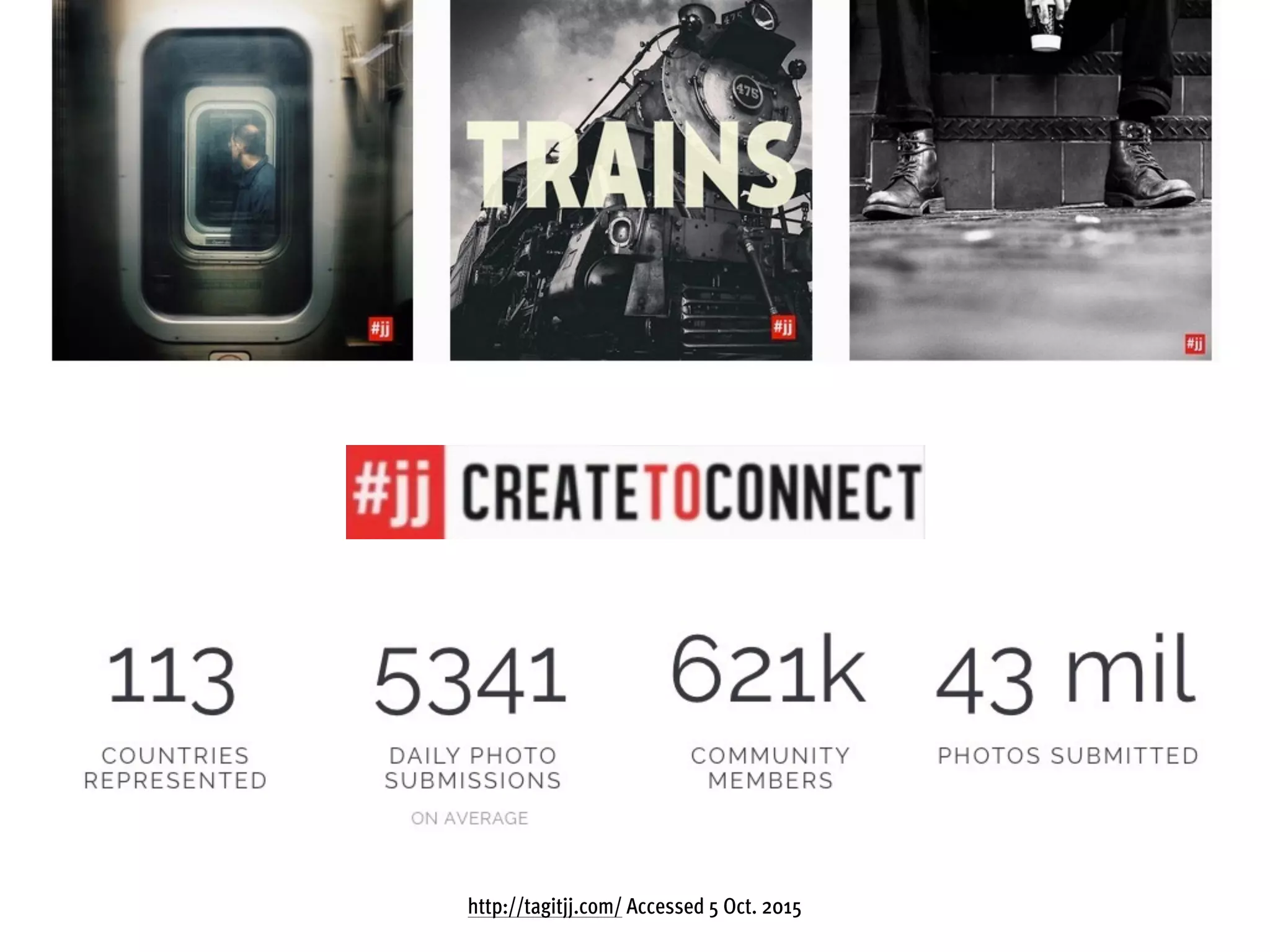
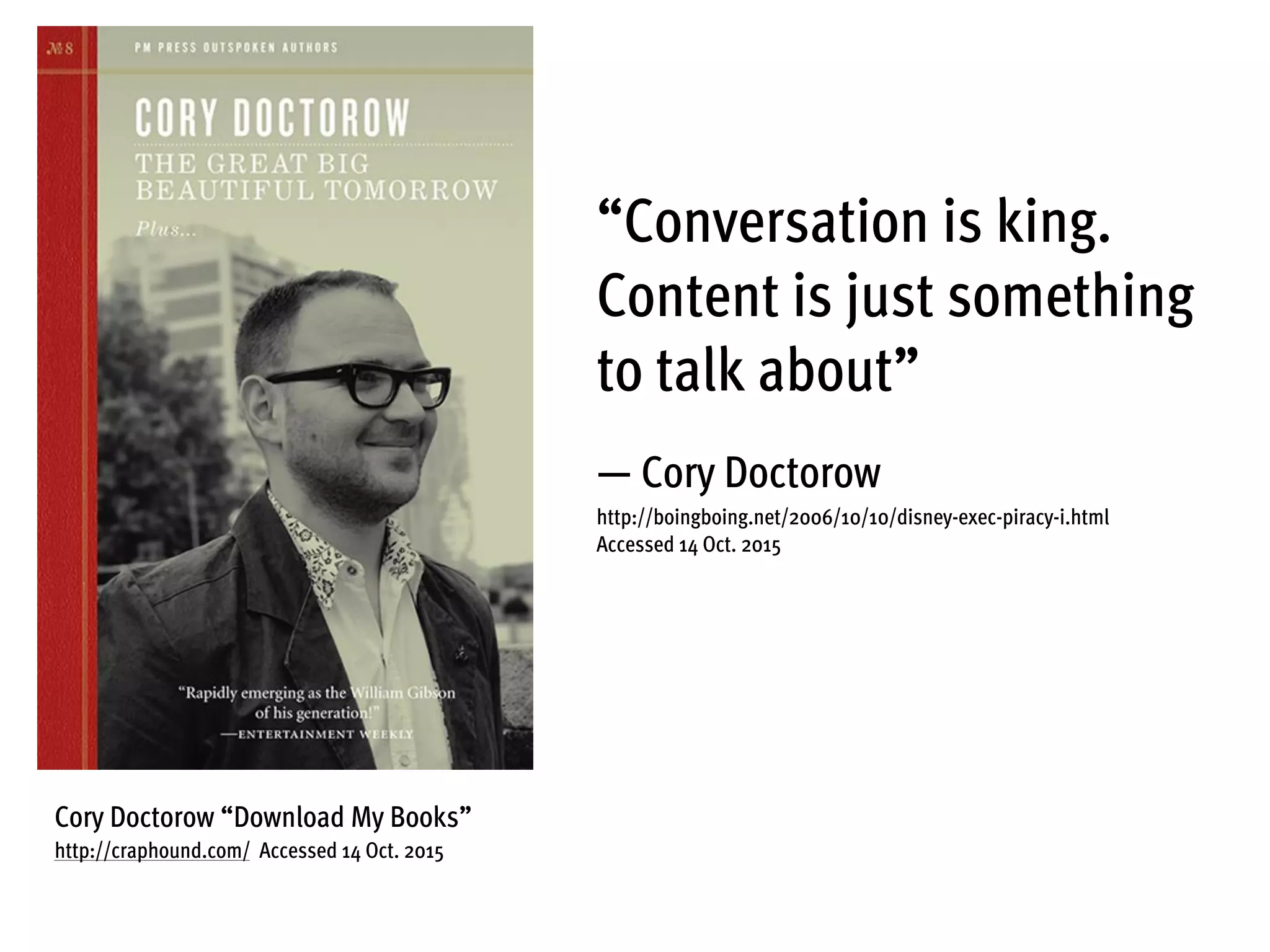
![“[L]ike literacy after the printing
press, design is becoming too
important to leave to a cloistered
few. For design to become more
relevant in a world like this, we
must find ways of expanding
design practice to amateurs and to
communal practice.”
— Clay Shirky
Gerritzen and Lovink, Everyone is a Designer in the Age of Social Media (2010), p. 24](https://image.slidesharecdn.com/ir16internetresearch16pres-151023041741-lva1-app6891/75/Imagining-and-Enabling-the-Collaborative-Commons-26-2048.jpg)
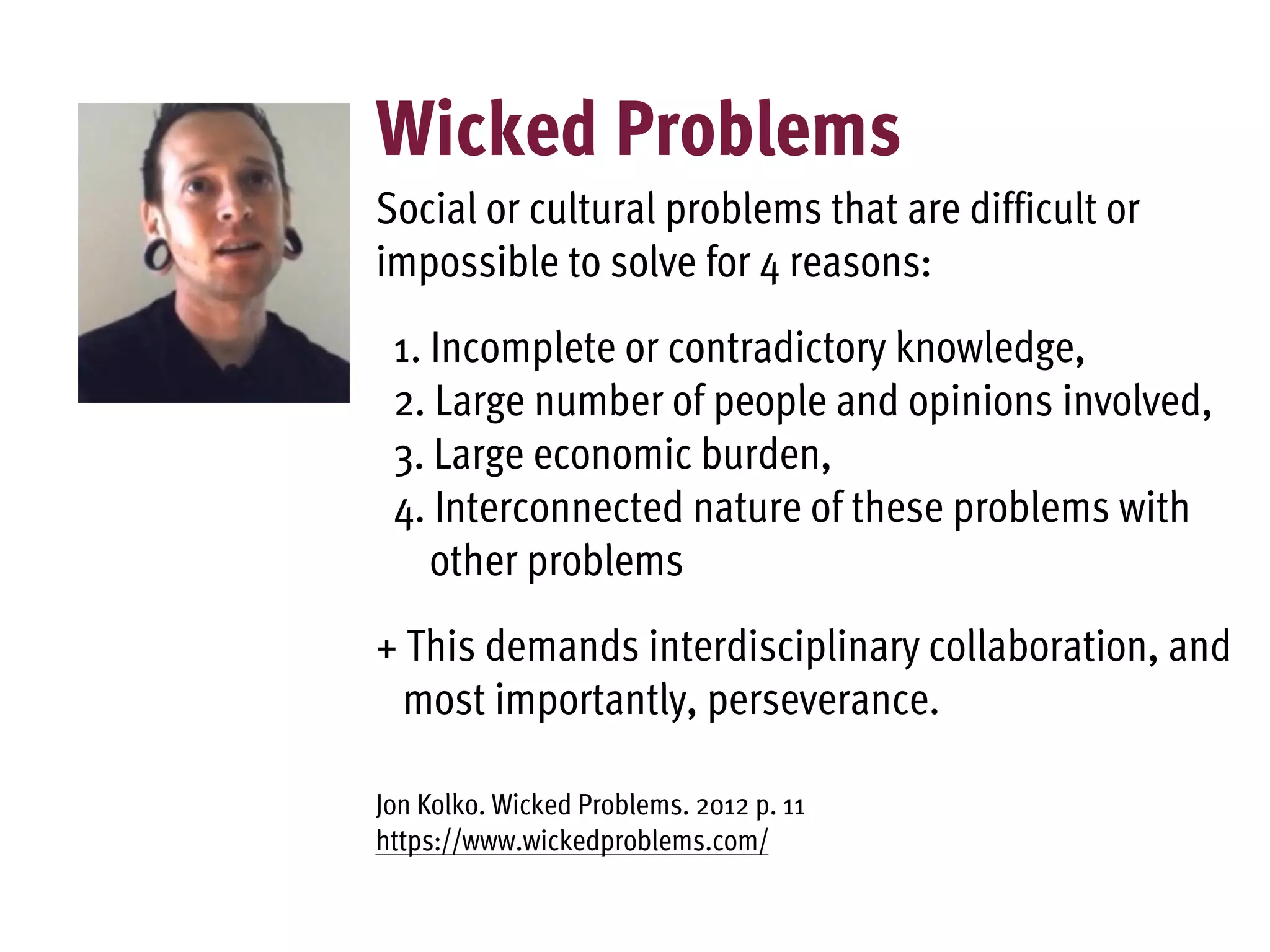
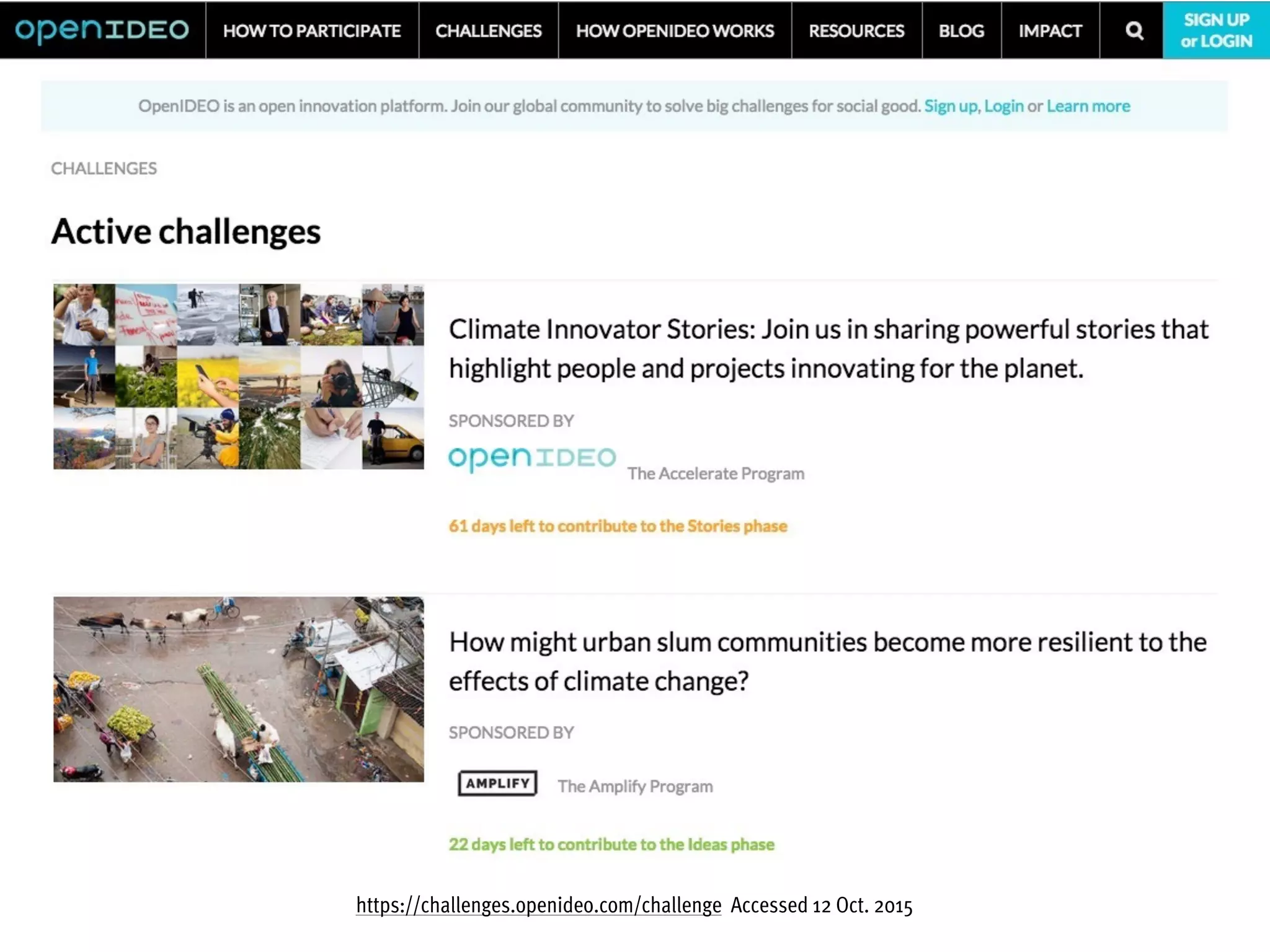
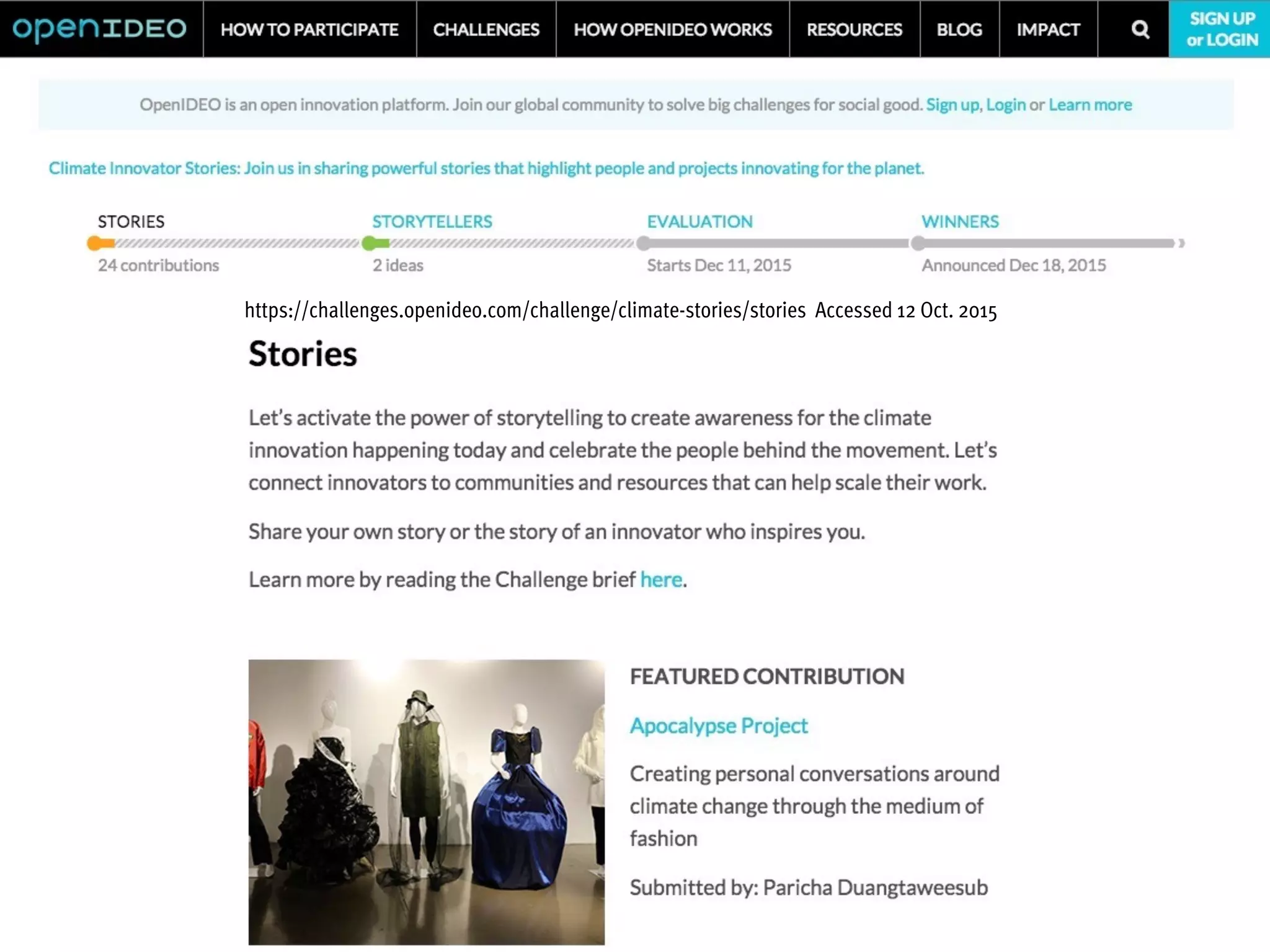
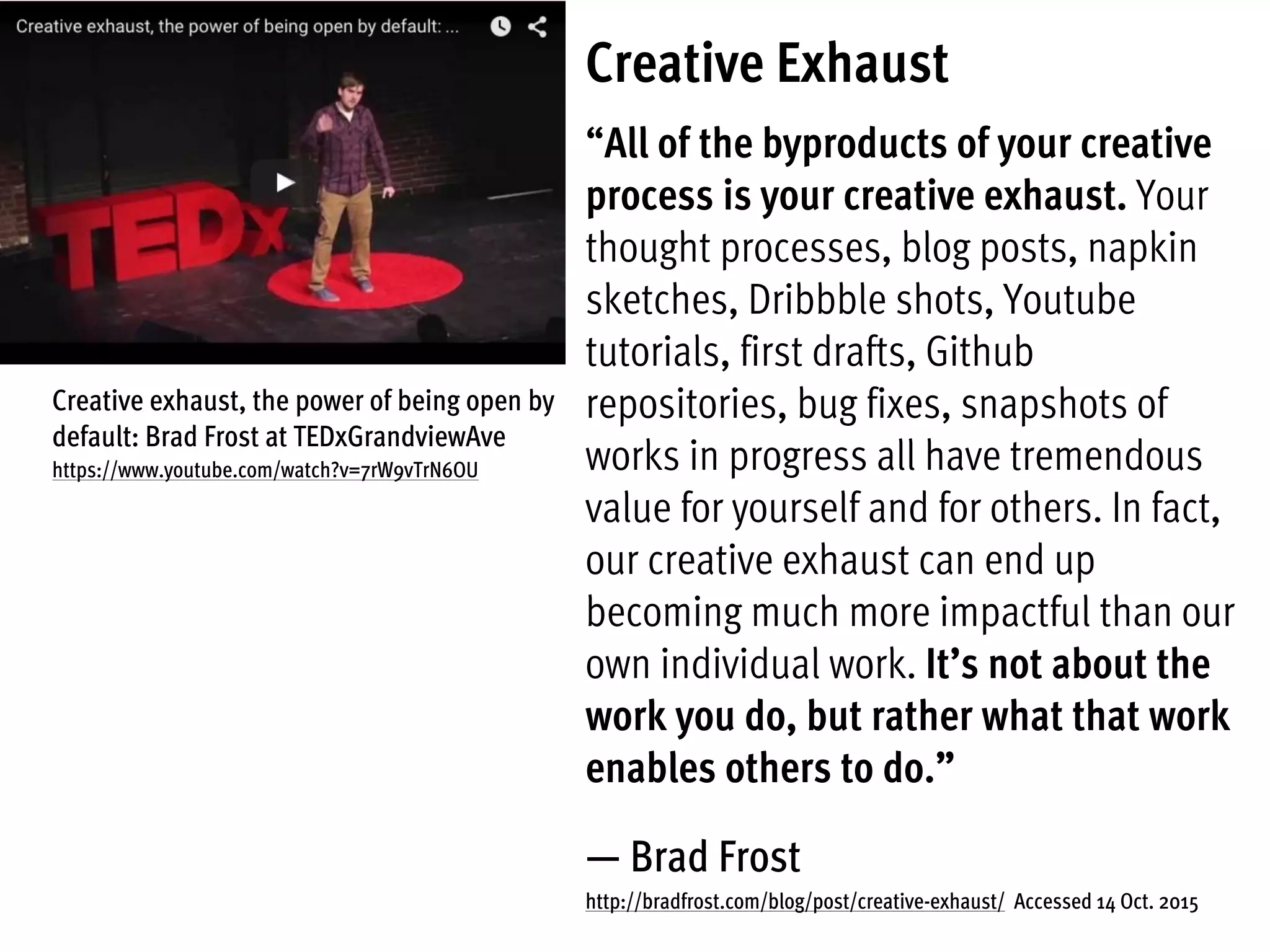
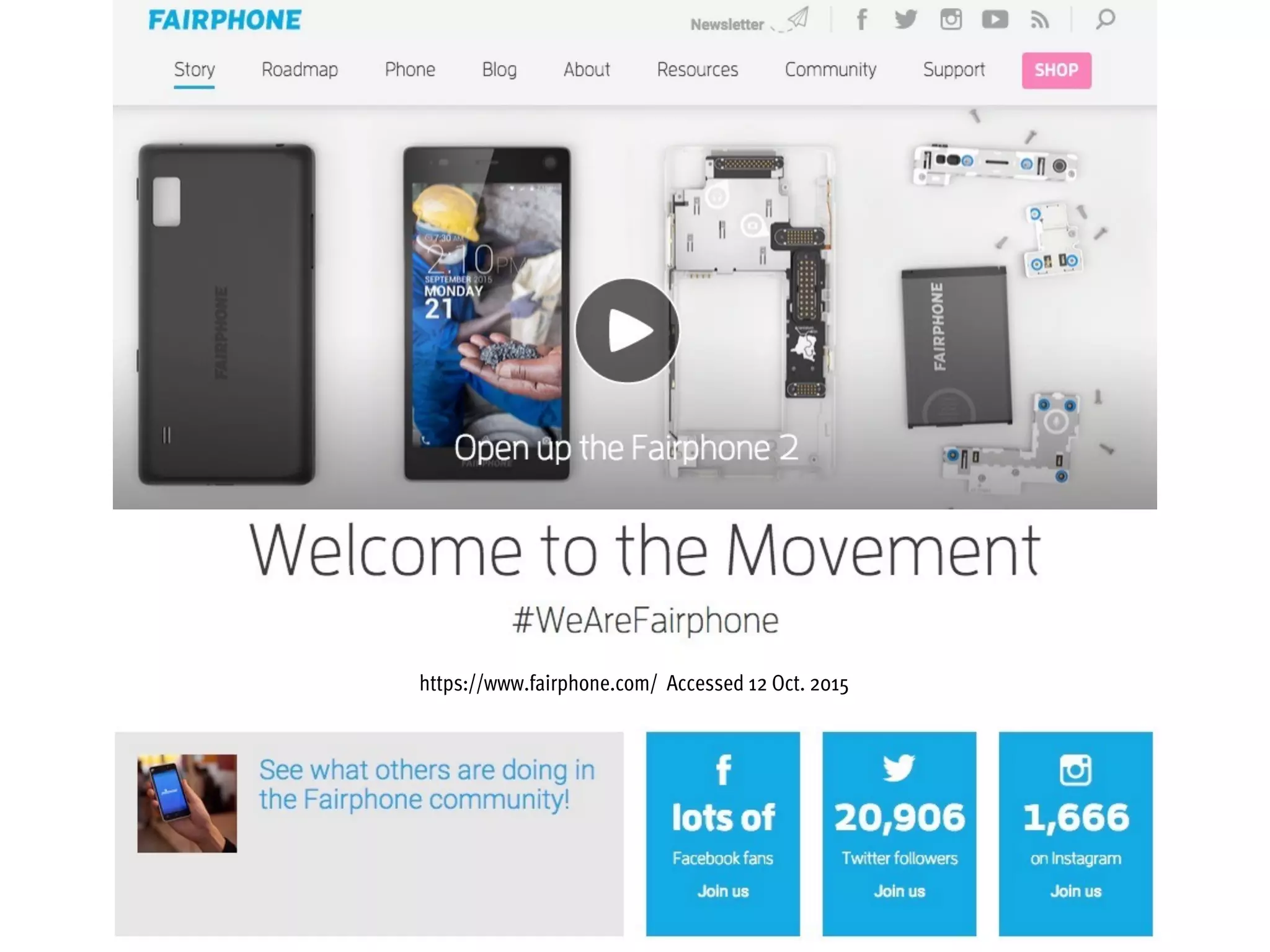
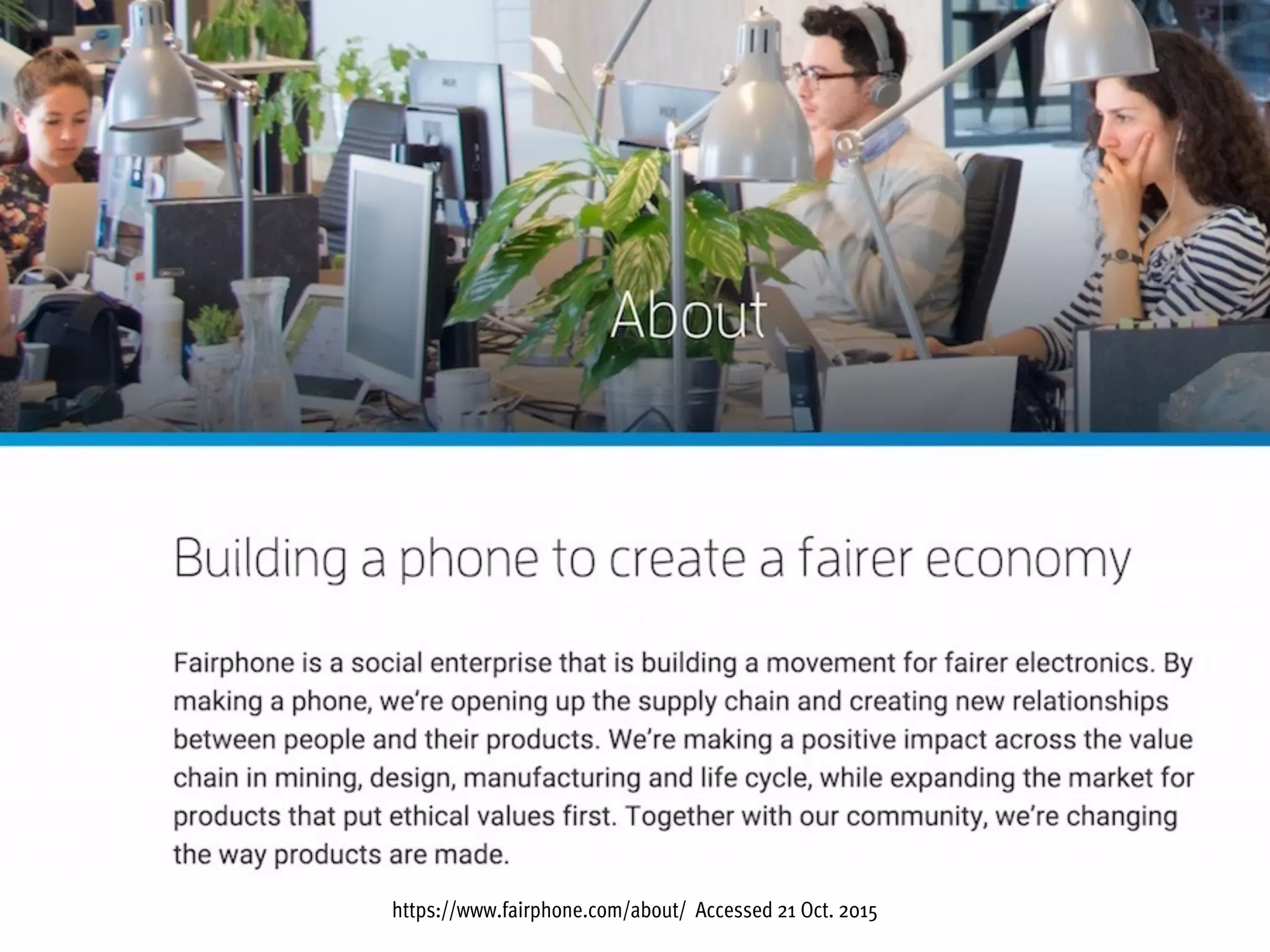
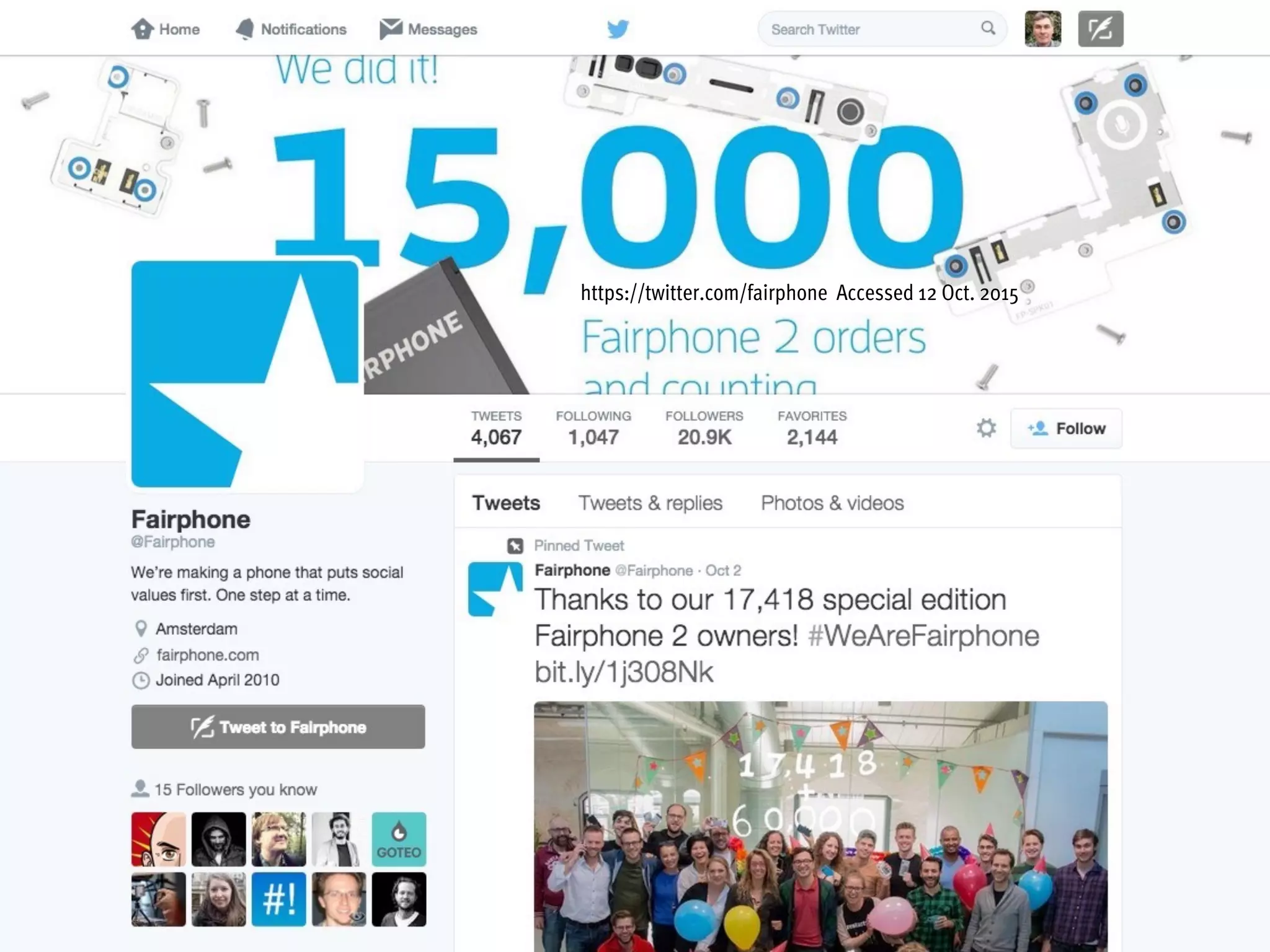
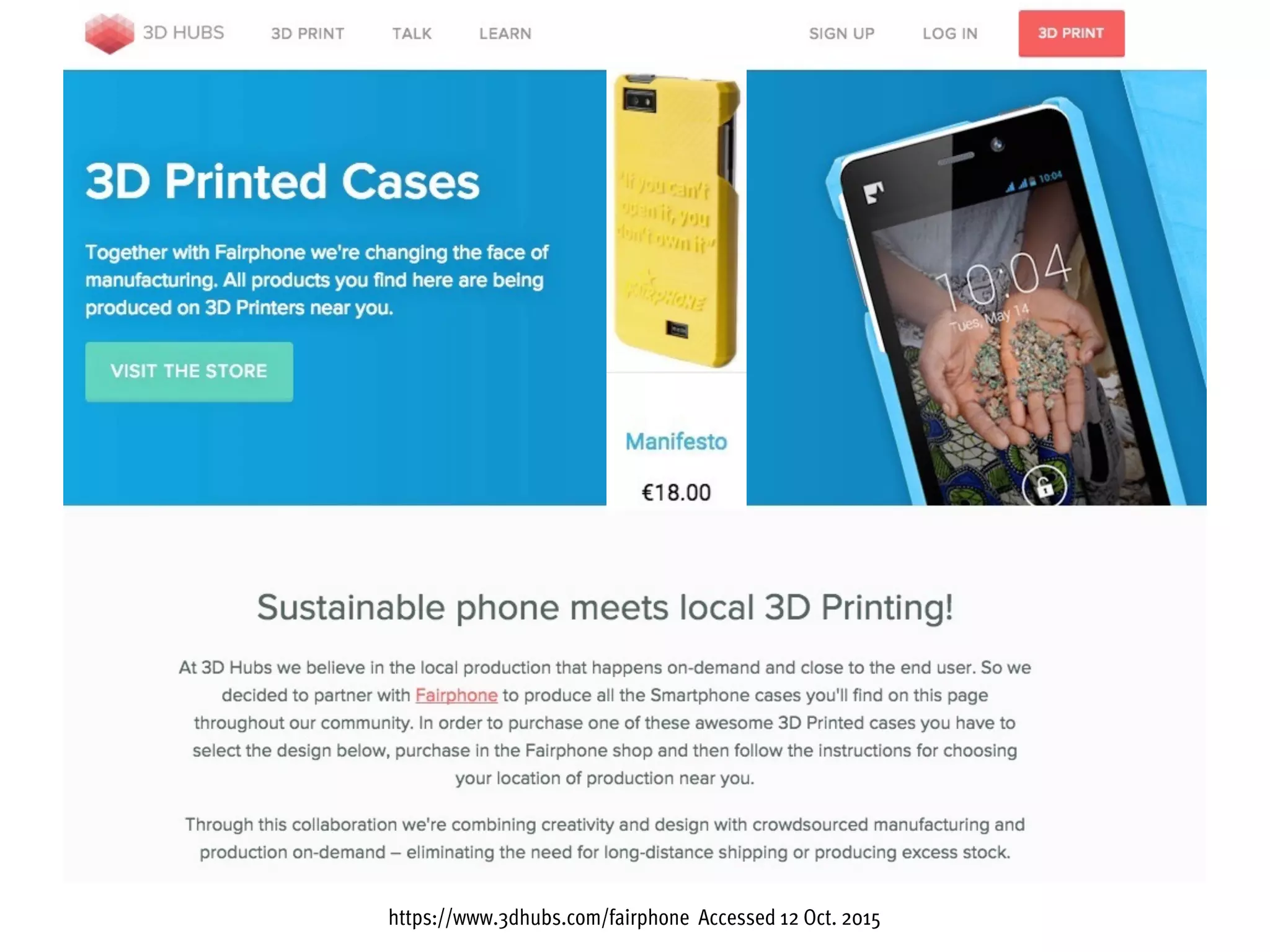
![“The new prosumers, on the other hand,
are increasingly banding together in
lateral networks, producing and sharing
information goods, renewable energy, 3D
printed products, and an array of
services on a global Collaborative
Commons at near zero marginal costs,
disrupting the workings of capitalist
markets. [. . .] If there is an underlying
theme to the emerging cultural
conflict, it is the “monopolization vs.
democratization of everything.””
— Jeremy Rifkin, (2014), The Zero Marginal Cost Society: The Internet
of Things, the Collaborative Commons, and the Eclipse of Capitalism](https://image.slidesharecdn.com/ir16internetresearch16pres-151023041741-lva1-app6891/75/Imagining-and-Enabling-the-Collaborative-Commons-35-2048.jpg)
